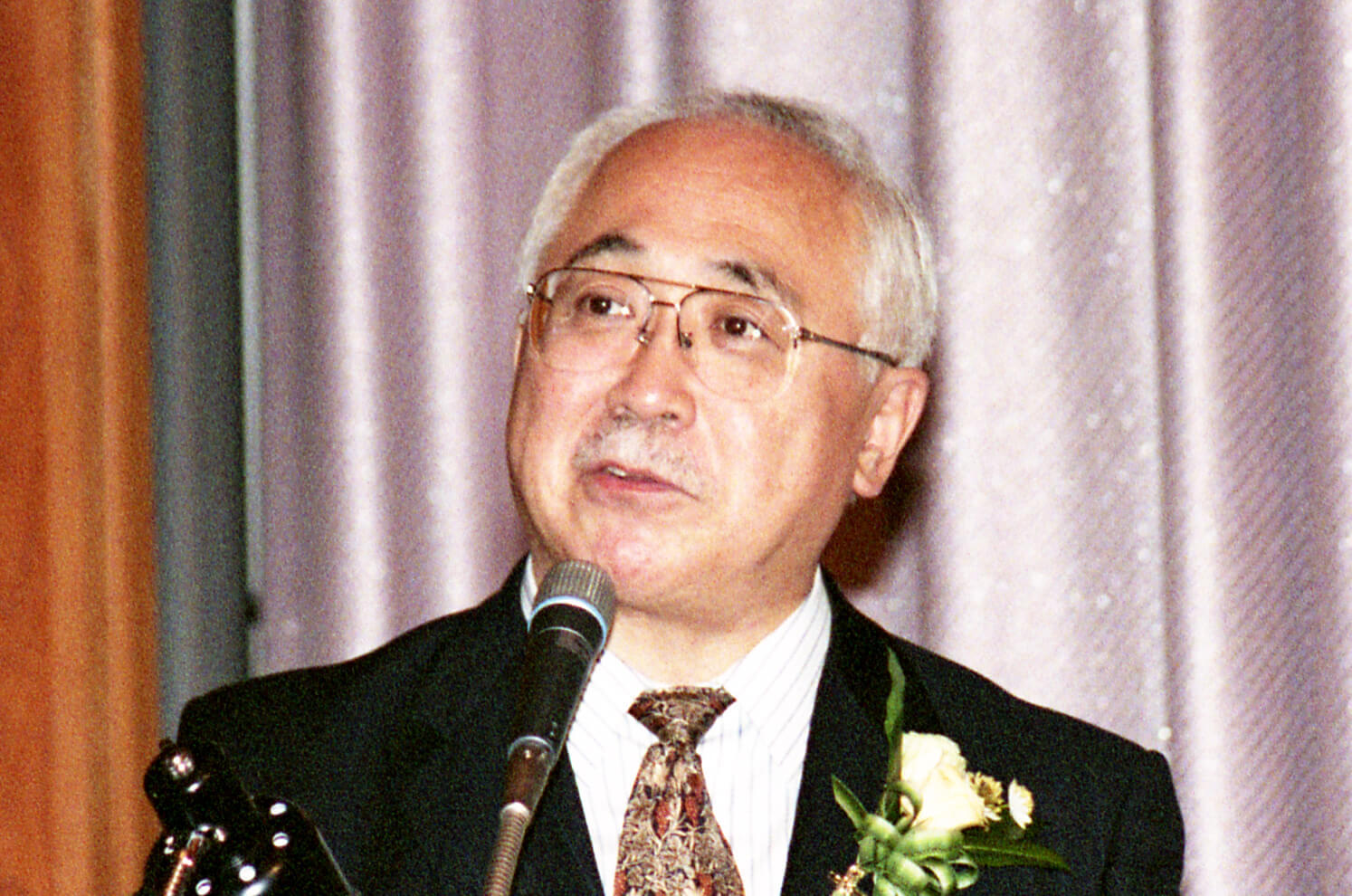- 30th
- 25th
- 20th
- 10th
-
30th (2022)
The 30th Anniversary Symposium (August): Commemorative Lectures




In commemoration of the 30th anniversary of the establishment of the Blue Planet Prize, the 30th Anniversary Symposium was held at Hamarikyu Asahi Hall on August 25.
Three of the former Blue Planet Prize laureates delivered commemorative lectures and issued a joint statement.
Speakers
Prof. Eric Lambin, 2019 Blue Planet Prize Laureate
Professor, Université catholique de Louvain George and Setsuko Ishiyama Provostial Professor, Stanford University
Prof. Brian Walker, 2018 Blue Planet Prize Laureate Attended online
Hon. Research Fellow of the Commonwealth Scientific and Industrial Research Organisation (CSIRO) Hon. Professor, Australian National University
Prof. David Tilman, 2020 Blue Planet Prize Laureate video lecture
Regents Professor, University of Minnesota Distinguished Professor, University of California, Santa BarbaraThe 30th Anniversary Symposium (August): Proposals


In Part II, three former Blue Planet Prize laureates issued a "Declaration on the occasion of the 30th anniversary of the Blue Planet Prize" and a group of young Japanese people made proposals called "Young Environmental Advocacy."
In response to the discussions with the young people, how did the three laureates make their statement?
Prof. Lambin answered in an interview article of af Magazine, which is available here.
.... Youth Environmental Advocacy ....
On a daily basis, we hear news sources reporting on abnormal weather with phrases like "highest ever recorded" and "record breaking." At any given time, heat waves, torrential rains, typhoons, droughts, and other disasters are causing injuries to people somewhere in the world, throwing their life into turmoil, and even causing death. At our current level of engagement, our measures to counter global warming show no signs of being able to achieve the 1.5°C target set by the Paris Agreement, and the climate crisis continues to worsen, undermining the right of future generations to live peacefully and healthily.
At the same time, looking closer to our lives, villages are becoming depopulated, and the average age of the remaining residents continues to rise. Rural areas fall into ruin due to a lack of maintenance, creating more and more environments where only highly competitive organisms can survive. We should preserve biodiversity for the survival of humanity, but that must not be our sole purpose. We think all would be well if each individual person pursuing their dreams ultimately leads to the preservation of biodiversity. The important things are for everyone to be actively involved and to make choices that are not only beneficial in the present but also considerate of the future of the planet. We hereby advocate for the actions and behaviors required to achieve these.
Youth Environmental Advocacy drafting members
[Advocacy in response to climate change]
Calls for government, municipalities, companies, and universities to set greenhouse gas emission reduction goals to achieve the Paris Agreement's target of 1.5°C
If the current generation sets inadequate greenhouse gas emission reduction goals, then the next generation will be required to reduce emissions by an even greater amount to make up for it. The Japanese government and local municipalities need to raise their targets, enhance policies, and encourage large-scale emission sources (e.g., coal power generation, steel, and chemical industries) to tighten their measures. Companies and universities responsible for large emissions should also drastically improve their conduct. Measures should focus on energy conservation and fair migration toward 100% renewable energy sources instead of nuclear power; carbon capture, usage, and storage (CCUS); ammonia co-firing technologies; or other uncertain risky solutions.
Analyses conducted by the Intergovernmental Panel on Climate Change (IPCC) show that achieving the Paris Agreement's target of 1.5°C will require virtually zero CO₂ emissions by 2050 and a substantial reduction in other greenhouse gases as well as reduction of CO₂ emissions by roughly 50% by 2030. The Japanese government aims to reduce greenhouse gas emissions by 2030 to 46 to 50% of the nation's emissions in 2013. However, according to the Climate Action Tracker, even this will fall short of achieving the Paris Agreement's target of 1.5°C. Japan's reduction target must be raised to 62%. While the actions and behaviors of the general public also play an important role, all of the households and small-to-medium-sized businesses throughout Japan together only account for 28.9% of the nation's emissions, so it is clear that reductions in this sector will not be enough to achieve a 62% reduction by 2030 or carbon neutrality by 2050.
Switching the "electricity" in our homes, schools, workplaces, and municipalities
We call on everyone to switch contracts to a power company that sells electricity generated mainly through reusable energy sources, which produce lower CO₂ emissions, pose no nuclear risk, and minimize the risk of destroying the natural environment. In addition to switching energy providers for our homes, it is also important for us to extend this to our schools, workplaces, and municipalities.
While conserving electricity on this side of the outlet is important, it is also crucial to decarbonize on the other side of the outlet. Coal-fired power generation results in dozens of times more CO₂ emissions than solar power generation in the course of producing the same amount of electricity. If power companies increase their coal-fired power generation output, then any power-conservation efforts by ordinary households to reduce CO₂ emissions will ultimately be for nothing. In Japan, there are currently 163 coal-fired power plants in operation, with another 8 being planned or already under construction.
In addition, in light of the accident at TEPCO's Fukushima Daiichi Nuclear Power Plant in 2011 and the Russian military threat to the Chernobyl Nuclear Power Plant in 2022, it is evident that nuclear power poses enormous safety risks. The structural problems involved in pushing the nuclear waste burden on future generations also show no signs whatsoever of being resolved. Although renewable energy sources also raise concerns about environmental harm, their impact is vanishingly small in comparison to fossil fuels or nuclear energy. As shown by research teams at Lappeenranta-Lahti University of Technology LUT and others, following comprehensive energy conservation efforts, it is both possible and realistic to meet necessary energy demands using nothing but renewable energy sources.
Shifting to a healthier, lower-carbon diet
In addition to us as individuals changing our behaviors, the government and companies should also work to re-examine environmentally harmful eating habits and promote a shift toward healthier, more sustainable food systems. While acting at the individual level to reduce our consumption of meat (especially beef) and switch to sources of plant-based protein, reduce our usage of air-shipped foods, and aid in resolving environmental issues associated with palm oil and other materials, we also call on the government and companies to expand the scope of their efforts in these areas. The government should also consider taxing foods that impose an especially heavy environmental burden in order to curb consumption (e.g., a "meat tax").
Food-related CO₂ emissions - from energy used in transporting and storing food, as well as due to land usage, changes in land usage, and other factors - are massive. Research has shown that approximately one-third of anthropogenic greenhouse gas emissions are due to food systems. It is well known that beef, in particular, is a major source of greenhouse gas emissions due to large methane emissions from burps and other sources. Changes in land usage for raising livestock are also causing serious harm to the natural environment. Moreover, it has become clear that reducing meat consumption not only counteracts climate change and aids in natural ecosystem conservation, but it also benefits human health. (Some have pointed out that red meat is an essential source of vitamin B12 for children.) Another issue pertains to the so-called North-South divide, in that, developed countries in North America and Europe continue to consume large quantities of meat, while consumption volumes in poor developing countries are extremely small.
The habit of "consciously refraining" will change the future
We tend to feel that protecting the environment is such a huge issue that our behaviors as individuals will have no particular effect. However, this is not true. According to Oxfam, the wealthiest 10% of the world's population generate half of all CO₂ emissions. Japanese people fall into this category as the second wealthiest population in the world after the U.S. In other words, if we change our habits and behaviors, it will have a much bigger impact on the climate crisis than we realize.
Some examples of particularly effective ways of countering climate change include reducing our use of disposable products and curbing our consumption of so-called "fast fashion," which is mass-produced at low cost and considered problematic because we tend to discard these items after only a short period of time. We can inspire change by indirectly showing the companies producing these sorts of items that we refuse to buy products that impact the environment in harmful ways.
When it comes to using plastic bottles and packaging, we are told to "reduce, reuse, and recycle." Of these, reducing - in other words, not using, consuming, or producing the products in the first place - lowers the impact on the environment to the greatest degree. We call on everyone to prioritize the habit of avoiding unnecessary purchases.
Climate Change - Education
Our children will be even more severely affected by climate change as time passes, so it is of critical importance to educate them on the matter.
At present, classes on environmental issues have been incorporated into the curricula at elementary, junior high, and high schools. However, much more needs to be done. All children should also be taught the concept of the tipping point. Universities and vocational schools should also be required to provide classes on environmental consideration and measures to counter climate change.
In addition to students, it is also important to educate adults who are actually in positions to take action on climate change. Companies also need to take action, including actively holding in-house study sessions, in order to keep pace with the ever-changing global situation. Our actions and behaviors tend to influence those around us. In society today, we are under the illusion that "since no one around me is taking action, climate change must not be a big problem."
[Advocacy for preservation of biodiversity]
One of the crises over biodiversity in Japan is due a decline in human activities. This is easy to recognize if you call to mind the state of many rural areas. In the past, people participated in the agriculture and forestry industries for their livelihood, and ecosystems were regularly managed to maintain high levels of biodiversity.
However, aging and depopulation in these areas have resulted in abandoned fields and untended woodlands, which have now become wastelands. When no longer managed, vegetation in these areas become so overgrown and cut off sunlight that only the most competitive creatures can survive. These changes reduce the level of biodiversity.
However, if such areas are taken care of once again, it will return to being rich natural environments. Now, as in the past, there are many places in need of human attention. We are sure that if you try, you can easily recall seeing stretches of abandoned farmland near you.
So far, preserving biodiversity has been seen as an environmental issue that must be addressed for the survival of humanity - and this is of course important! However, the main purpose of preservation does not necessarily have to be to solve problems. It is fine as long as biodiversity is ultimately preserved.
"I want to build a playground for children..." "I want to create a venue for community interaction..." What are your dreams? There are sure to be natural environments nearby with the potential to make your dreams come true. Let's all make a point to enjoy the natural environment more!
More is at stake than just the so-called "great outdoors"
When we hear the phrase "preservation of biodiversity," many of us probably envision preserving endangered species and primeval woodlands, like tropical rainforests. While these are of course also important, at the Conference of the Parties (COP10) to the Convention on Biological Diversity held in 2010, participants set the goal of designating 17% of terrestrial and inland water and 10% of coastal and marine areas as Protected Areas. However, ecosystems are maintained by the Earth's diverse range of creatures and organisms as they influence and complement each other. This interconnectivity between all living things - from forests to oceans - is what forms the natural foundation necessary for us to live happily. This is why the concept of other effective area-based conservation measures (OECM) has been attracting attention in recent years. The purpose is not to preserve the environment in these Protected Areas. Rather, with a focus on "other" areas like rural communities where people live and engage in agriculture and other production activities, the goal is to preserve regions like these as means of achieving even more effective conservation.
At the COP15 held in 2021, in addition to committing to OECMs, participants also set the goal of preserving 30% of the Earth's land and sea areas critical in maintaining biodiversity by 2030.
As you can see, enriching biodiversity requires improving all environments, from the all-encompassing great outdoors to areas of nature closer to our daily lives.
Urban ecosystem conservation
Let's set aside complicated explanations for a moment to introduce some fun ways to aid in preserving biodiversity. The preservation of biodiversity is not "up to other people." It is something that we can all do at home and in areas that have already been developed.
For example, we could put flowerpots out on our balcony. We could plant plants that are native to the area, or if we live in an area surrounded by greenery or with lots of birds, we could lay down soil and leave it as it is. Wind and birds will likely bring plant seeds, which we can enjoy once they sprout.
If you set out potted plants, it is a good idea to observe them closely for a while. Bees, butterflies, and various other creatures are sure to make use of them.
If you put plants on your balcony that are native to the area, you will be able to create a "stopover" spot for other living things. With a little ingenuity, we are able to help restore an area's original ecosystem.
If you are in school, you might even want to use this as the topic of your summertime independent research project.
Ecosystems are undergoing changes as global warming drives alpine and polar creatures out of their native regions and southern creatures to move north.
Although some caution is required, enacting measures to counter climate change is another way for us to further enrich biodiversity.
Urban areas have lost many elements of nature. The wilderness in some rural areas no longer possess biodiversity due to a decline in human intervention.
However, just because these have been lost is no reason to give up. Starting from these circumstances, we can begin to make changes for the better.
What we can do as consumers
As consumers, there are many things we can do, such as making a point to consume locally produced products or to purchase products with certification marks signifying that the manufacturer complies with standards and regulations. We are now surrounded by an increasing number of products that are certified and labeled as having been produced in a manner that takes biodiversity into consideration.
A few examples include the Forest Stewardship Council (FSC) logo, which indicates that any lumber used in a product is from forests that are managed and logged with consideration for the environment and local communities; the Marine Stewardship Council (MSC) logo, which indicates that seafood was caught using sustainable, environmentally-friendly fishing practices designed to restore dwindling marine resources; and the Rainforest Alliance logo, which is placed on products from certified farms that meet standards related to ecosystems and pesticide management.
By making a point to choose these sorts of products, we as consumers can also play a part in supporting efforts to preserve biodiversity. Some people may be hesitant when making purchases, and if so, you might want to first look for a certification mark.
Noticing these sorts of marks, logos, and seals makes us a little more aware of environmental issues, and becoming interested in these issues is an important first step.
It is also a good idea to spend some time thinking about the producers who work hard toward conservation while still supporting our daily lives.
Other important steps include looking beyond the packaged products and learning more about the realities of the agriculture, forestry, livestock, and fisheries industries. You could also make a habit of looking for certification marks together with your children - sort of like hide-and-seek - which they would likely enjoy. This is a way of teaching children more about the environment, and it might even inspire them to play active roles in the future. By changing our behaviors to be a bit more nature-conscious, we can help make the world we live in a much richer place.
This advocacy was written by the following members and posted after verification by other youth members.
[Climate Change]
Masayoshi Iyoda, 350.org Japan, an international environmental NGO
Yuho Hara, Fridays For Future Japan
Mana Saza, SWiTCH Association of Sustainability
[Biodiversity]
Kairu Kobayashi and Ichika Inaba, Youth Biodiversity Network
... Declaration on the Occasion of the 30th Anniversary of the Blue Planet Prize Laureates ...
Imagine a society organized around the three pillars of sustainability for a nature-positive future that leaves no one behind. The natural world would be preserved and reintegrated into our lives, agricultural landscapes, and cities. Social justice and equality would be core values in political decisions to avoid the extreme forms of social inequality that are prevalent today. Diverse economic opportunities would be offered to all so everyone could strive to fulfil their aspirations and potential, and live a dignified life. Such a society would embrace core values of empathy, justice, sustainability, and knowledge.
Realizing this vision is a journey that requires maintaining a focus on our values and goals. By cultivating optimism and deploying immense creativity we will find solutions that are consonant with a society's culture, thus achieving short-term successes, and ensuring persistence. The point of departure of this journey is the realization that our current trajectory is unstable and unsustainable and endangers future generations. Future uncertainties preclude us being able to define the exact, best path forward. We can, however, more readily identify futures we do not want, and hence avoid undesirable pathways leading to such futures from which it may not be possible to return. Doing this will allow us to remain within a set of acceptable pathways, the particular 'best' one of which will depend on cultural values and the state and dynamics of the world at the time.
The solutions for a sustainability transition are largely known. They include switching to renewable energy and to healthier and environmentally beneficial diets, making buildings more efficient, greening our cities, preserving biodiversity in a greatly expanded network of protected areas, helping farmers in low-income countries sustainably increase productivity, electrifying vehicles, managing forests and agricultural lands to enhance biodiversity and the provision of ecosystem services, investing in a fairer world, and encouraging solutions based on cooperation rather than conflict. Many innovations exist but their implementation needs to be rapidly scaled up. In parallel, the existing, unsustainable systems need to be actively phased out. There will be many breakthroughs, setbacks and surprises along this journey, hence the need to build resilience in our systems.
Some of the required changes will be difficult and, as occurs in complex systems, may be more likely to be achieved after some small disturbance has initiated a "collapse" phase that is rapidly followed by reorganization. This short re-organisation phase is a time when crucial changes can be made. Understanding these dynamics and being prepared for the opportunities they provide is an important part of effecting transformational change.
Such a profound transformation of our societies and of our relationship with nature can only be achieved through partnerships between civil society organizations, public governments from the local to the international levels, and the private sector. These different individuals and organizations need to form coalitions and join forces to address specific challenges for which they develop common interests. These partnerships will require cultivating trust between these partners.
Civilizations are defined over the long term and need to have the welfare of future generations as a central goal. We need to listen more carefully to the voice of the young generation and pay attention to their messages. We need to encourage communication across generations and walks of life. We need to talk about the future and make it a subject of widespread debate that works its way up in society, to influence decisions by today's leaders. We cannot continue to make decisions that undermine the future of our own children or the quality of the environments in which they will live. Our future needs to be defined by the moral values we want to enshrine in our human existences.The 30th Anniversary Symposium (August): Panel Discussion

Two of the laureates and three young people had a panel discussion on environmental issues.
Panelist
【Laureates】
Prof. Eric Lambin, 2019 Blue Planet Prize Laureate
Prof. Brian Walker, 2018 Blue Planet Prize Laureate
【Youth Member】
Mana Saza, SWiTCH Association of Sustainability
Kairu Kobayashi, Youth Biodiversity Network
Masayoshi Iyoda, 350.org Japan, an international environmental NGO
【Moderator】
Mr. Hisanori Imamura, editor-in-chief, Asahi Shimbun DIALOGPanel Discussion

Prof. Eric Lambin
"It's important to be, on one hand, pragmatic and realistic in your requests. I think it's also important to develop a dream. Martin Luther King Jr. made a famous speech, "I have a dream." I want to hear from you. What is your dream? It's also important to have a positive try. These approaches decrease anxiety because you are not just there to solve problems left to you but you are really aiming somewhere."
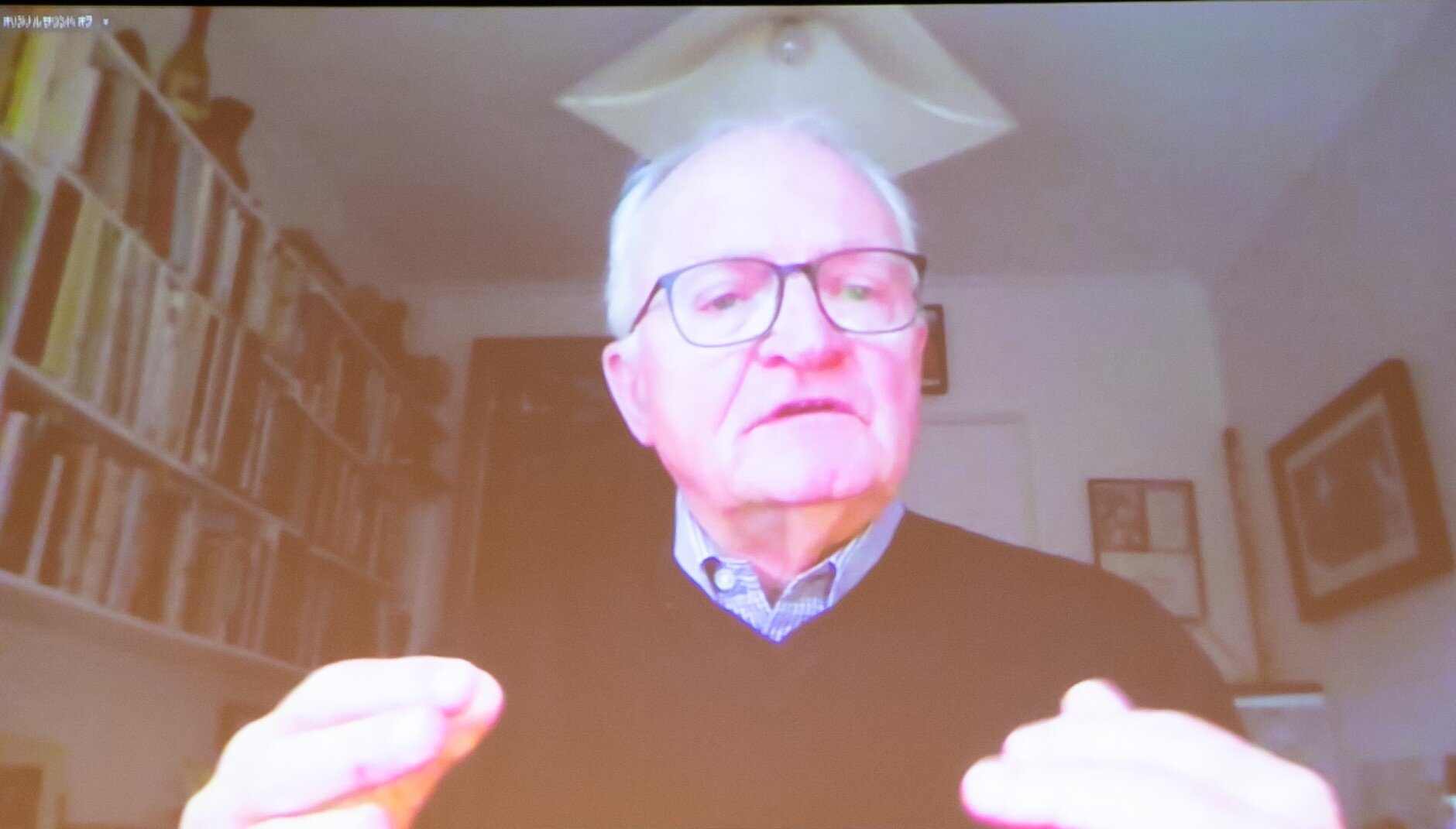
Prof. Brian Walker
"The challenge is keeping the big picture in mind and being able to deal with the components that need to be addressed individually, and sometimes together, to deal with the big picture. It's not easy to go up and down scales like that. It's easy to get depressed about the fact that what we're doing at this level is not influencing the big picture. I think that's a challenge for the youth. I would like to see how they can create different levels of attention, some people dealing with a big picture, others dealing with components."

Mana Saza
"The climate crisis needs to be taken seriously by everyone on this planet. What we proposed in the Youth Environmental Advocacy statement are the bare minimum. However, change comes from small steps that turn into ripple effects. To put environment at the center, let's all take a step together and encourage young people to become the drivers of a green movement. "

Kairu Kobayashi
"The proposals we made are what we need to do at the very least, but politicians and local authorities may regard them as tall orders. It's becoming critical how to close the gap. When calling for the need to address the environmental problems, I would like to take a positive approach in which people can feel the splendor of biodiversity, instead of just stirring up in people a sense of crisis."

Masayoshi Iyoda
"If you are staying calm and living a happy life, it's because you are ignorant. You need to listen to what scientists say and get into a panic. In order to solve environmental problems, it is also necessary to solve social issues, including gender inequity, and it takes solidarity of various people."
The 30th Anniversary Symposium (August): Video
Program
-- Part I
1. Opening remarks and video messages
0m 0s : Opening
6m 18s: Mr. Takuya Shimamura, Chairman of the Asahi Glass Foundation
14m 34s: Dr. Yoshihiro Hayashi, Chairman of the Selection Committee
19m 17s: Dr. Syukuro Manabe, One of the first Blue Planet Prize Laureates
2. Profile videos & Lectures
23m 30s: Prof. Eric Lambin
40m 02s: Prof. Brian Walker
57m 23s: Prof. David Tilman
-- Part II
1h 14m 55s: Opening
1h 15m 59s: Proposals by young people (Youth Environmental Advocacy)
1h 37m 56s: Declaration (read by Prof. Lambin)
1h 45m 04s: Comments by Prof. Eric Lambin & Prof. Brian Walker
1h 47m 13s: Panel Discussion -
25th (2017)
- Announcement of media statements (September)
- +25 years Commemorative Conference of the Establishment of the Blue Planet Prize (September)
- Announcement of statement (October)
- Symposium (November)
Announcement of media statements (September)
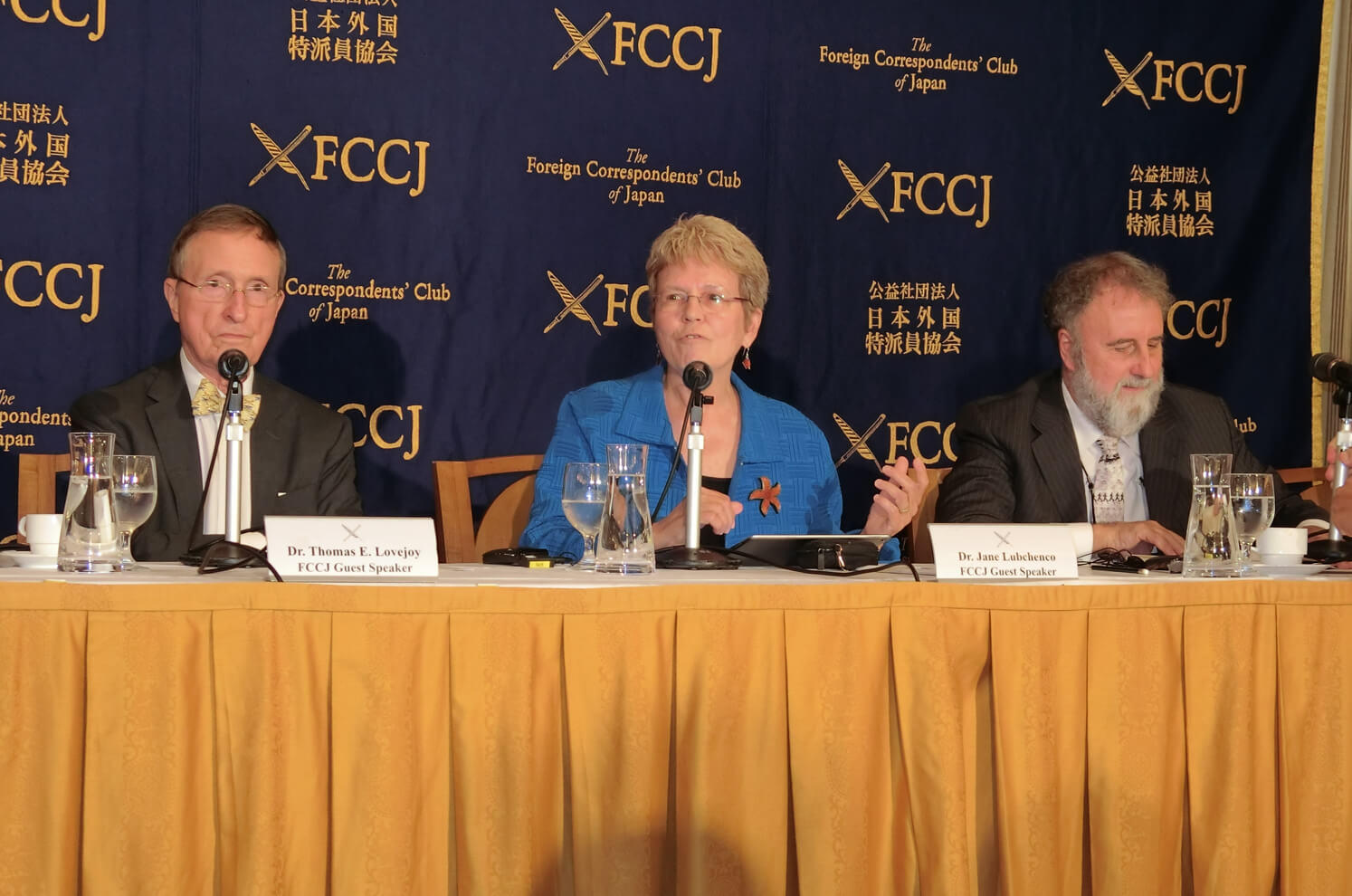
Dr. Robert Watson (a laureate in 2010), Dr. Jane Lubchenco (a laureate in 2011) and Dr. Thomas E. Lovejoy (a laureate in 2012) announced a media statement to approximately 60 members of the press under the heading 'The Earth's Environment is at a Crossroads. Solutions Exist. The Time for Action is Now.' at the Foreign Correspondents' Club of Japan on September 7.
+25 years Commemorative Conference of the Establishment of the Blue Planet Prize (September)
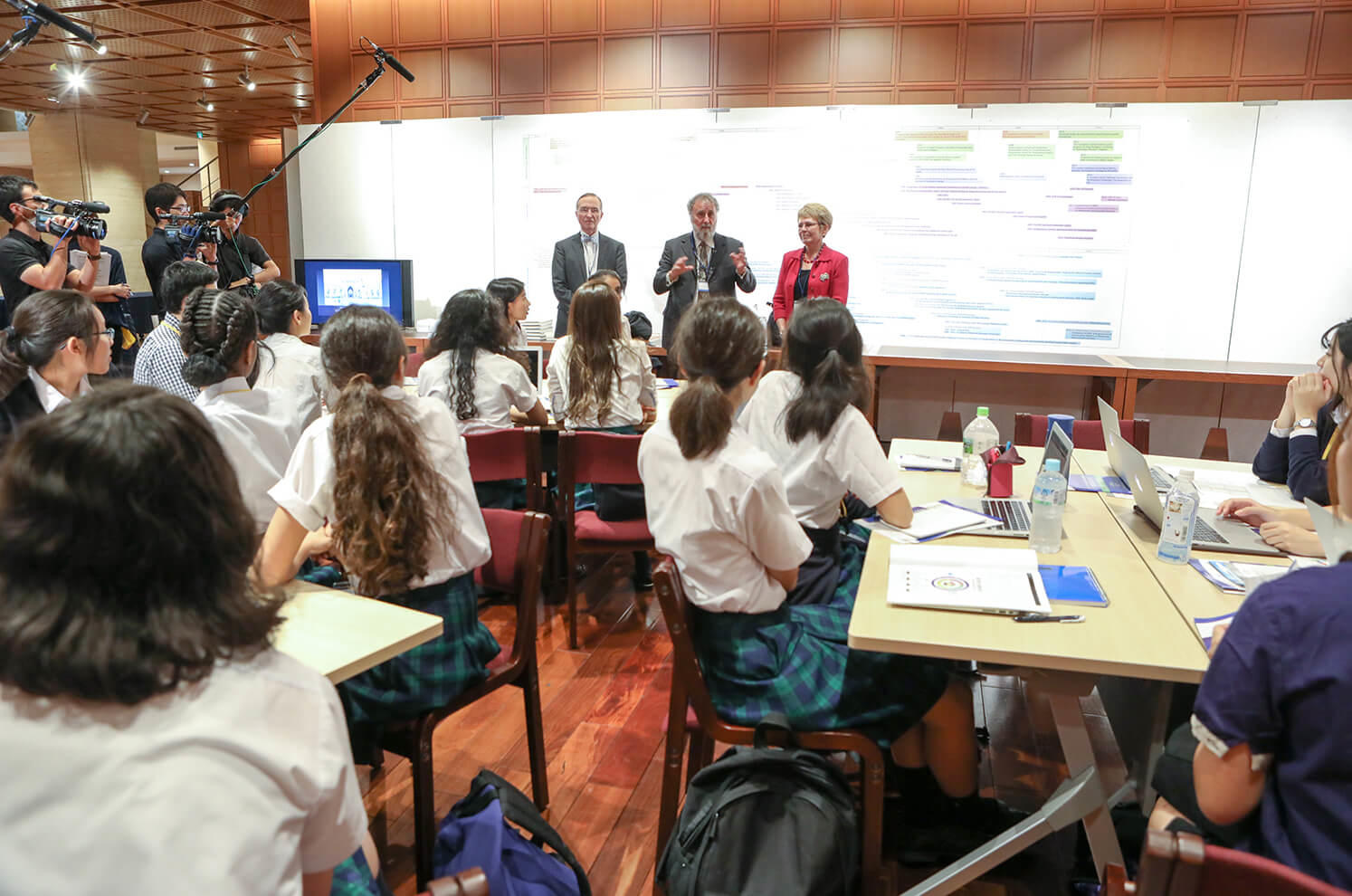
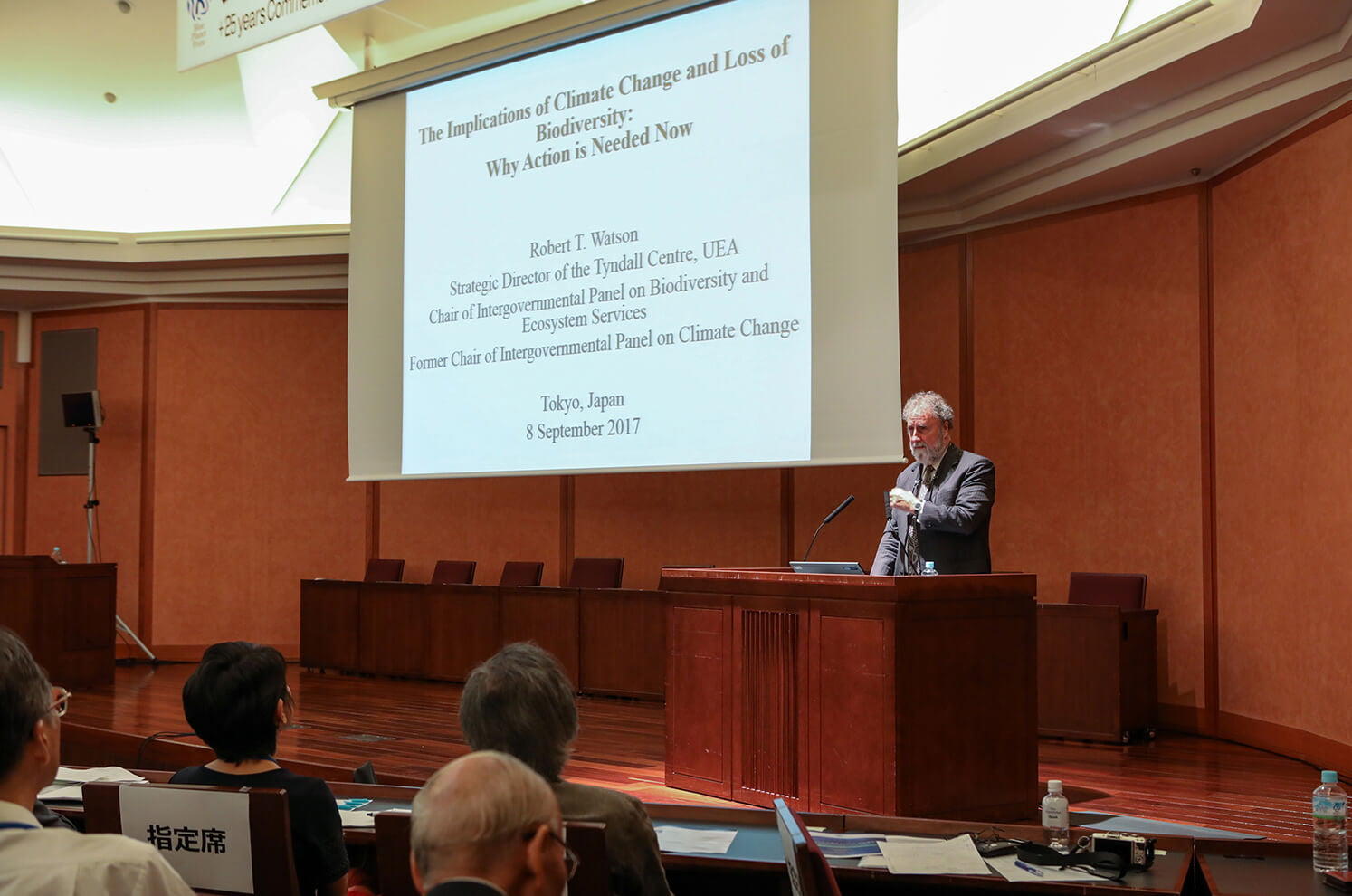
The three past laureates (Dr. Robert Watson, Dr. Jane Lubchenco and Dr. Thomas E. Lovejoy) were invited to a lecture session held at the Ito International Research Centre, The University of Tokyo on September 8, at which they had a discussion with students from high schools and universities in Tokyo in part one. In part two, the three laureates gave memorial lectures under the heading "The Earth's Environment is at a Crossroads. Solutions Exist. The Time for Action is Now." The lectures were followed by a discussion that was attended by five renowned panelists including Mr. Tetsuji Ida (Senior Staff Writer & Editorial Writer Environment, Energy and Development Kyodo News, Science News Desk). The discussion attracted around 150 participants.
Panelists
- Mr. Hiroshi Ono
- Deputy Director General, Global Environment Affairs, Ministry of the Environment
- Ms. Junko Edahiro
- Professor, Tokyo City University, President of Institute for Studies in Happiness and Society
- Mr. Shigeki Kobayashi
- Senior Researcher, Chubu Transportation Research Institute, Committee member of the Environment Ministry IPCC Domestic Liaison Committee WG3
- Mr. Takejiro Sueyoshi
- Special Advisor to The UNEP Finance Initiative
- Mr. Yasushi Hibi
- Representative Director of Conservation International Japan
Announcement of statement (October)
A plea to the world for compliance with the Paris Agreement: a joint statement from 31 past laureates of the Blue Planet Prize
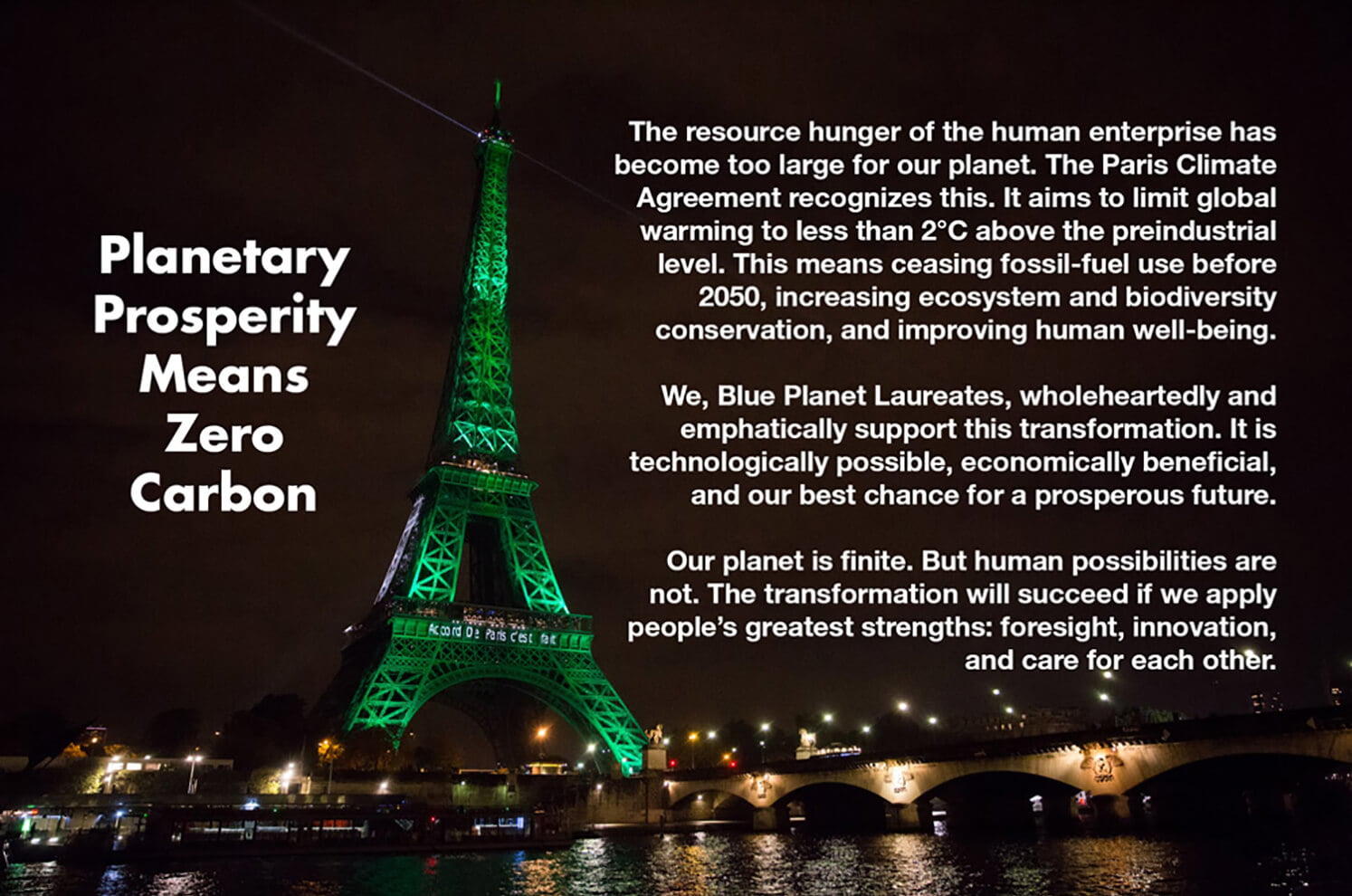
Symposium (November)
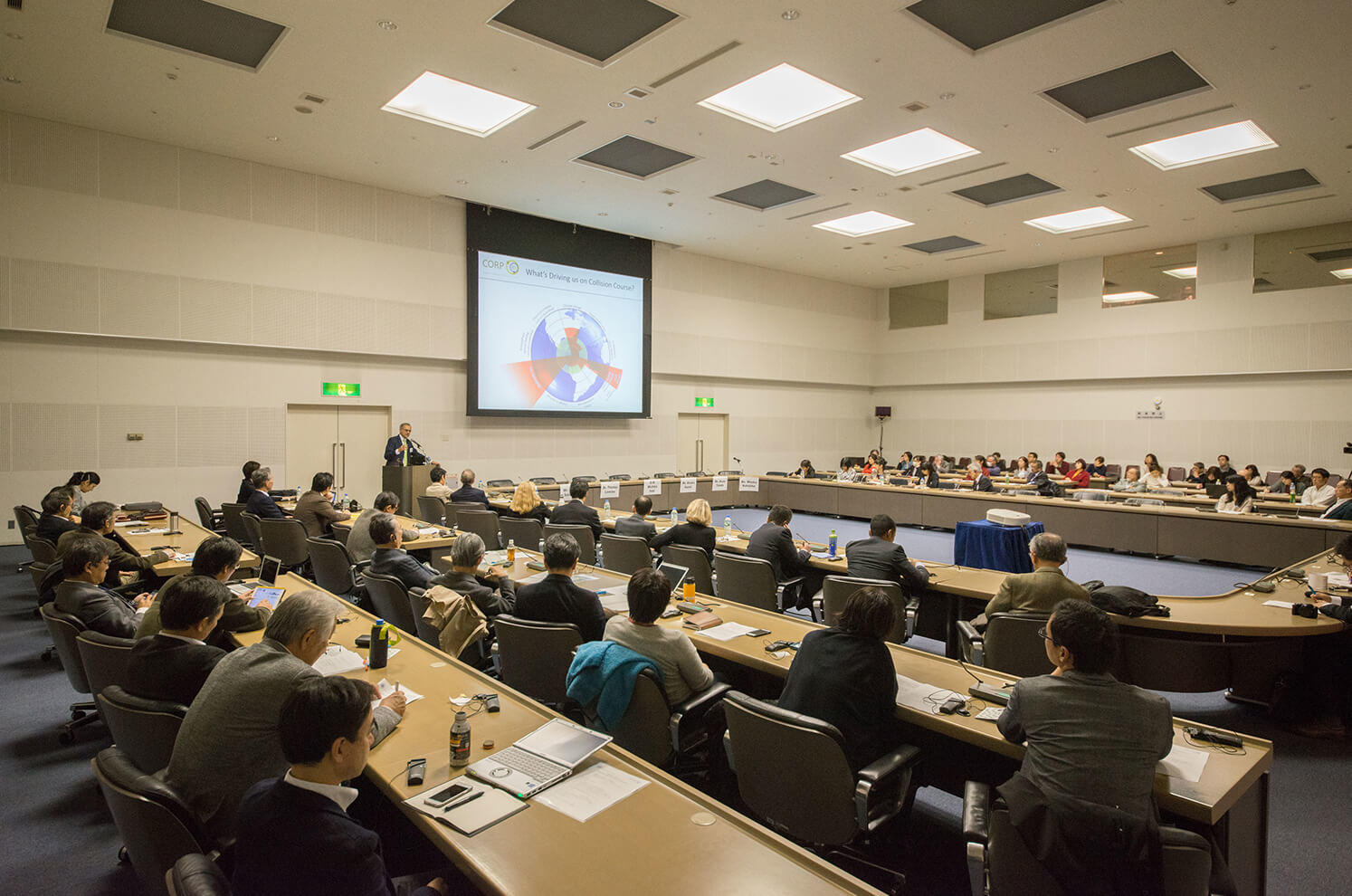
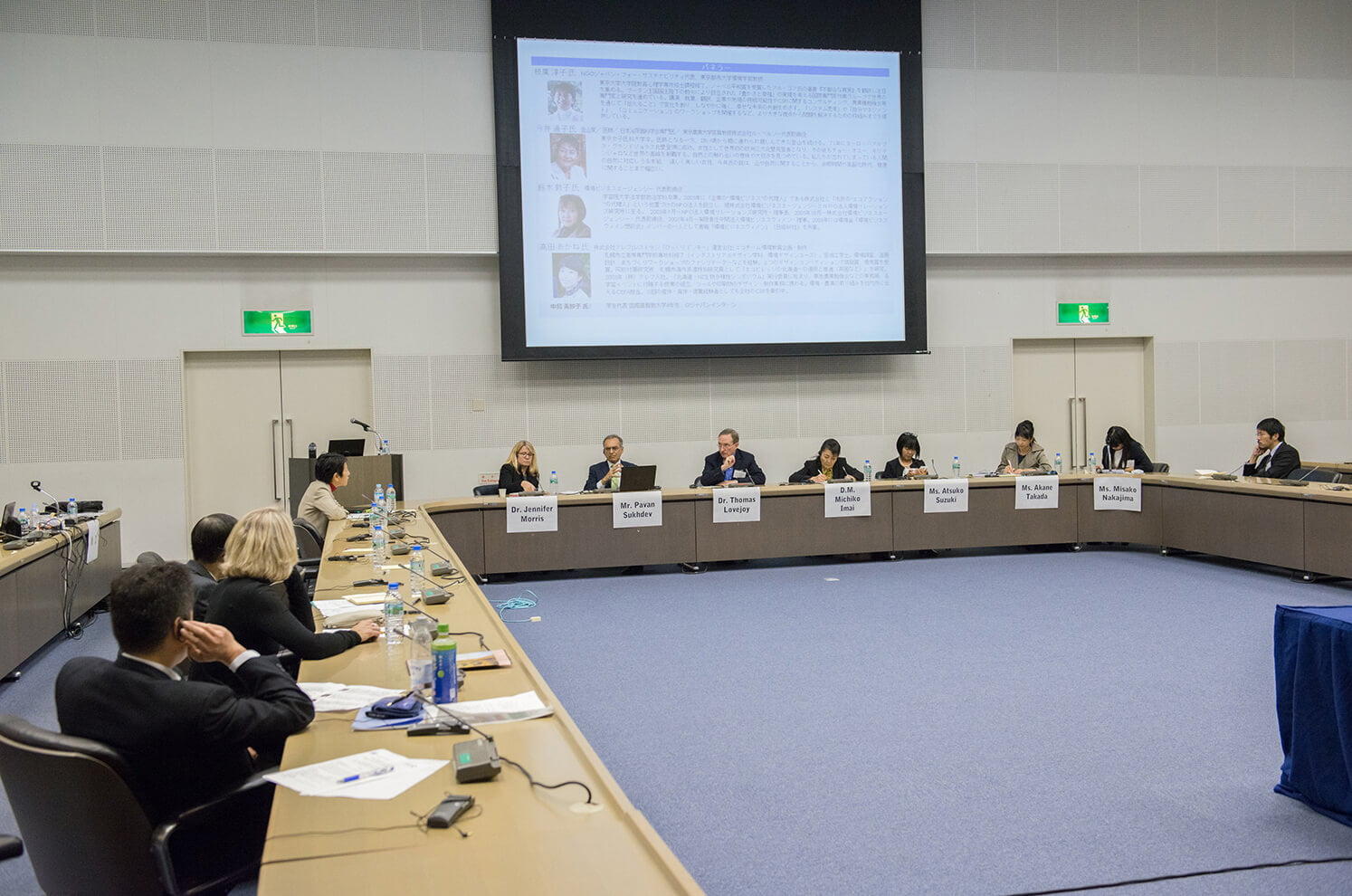
A symposium under the title "From isolation to connection - What we can do for a sustainable future ." was held on November 16 at the Elizabeth Rose Conference Hall of the United Nations University in cooperation with Conservation International Japan.
In part one of the symposium, Dr. Thomas E. Lovejoy and Mr. Pavan Sukhdev (a laureate in 2016) delivered lectures under the headings "Genuine biodiversity designates that all the lifeforms can connect and support each other" and "Planetary Connectedness and Systems Thinking for an Economy of Permanence," respectively, followed by a lecture under the heading "The relation between biodiversity and economy: connectivity with the Japanese society" given by Ms. Jennifer Morris, President of Conservation International (a laureate in 1997).
In part two of the symposium, a panel discussion was held with the attendance of not only the three laureates but also Ms. Junko Edahiro (Professor of the Faculty of Environmental Studies Tokyo City University), who undertook the role of facilitator, and guest panelists including M.D. Michiko Imai (Climber and Director of Verseau Inc.), Ms. Atsuko Suzuki (The Representative director, Environmental Business Agency), Ms. Akane Takada (Aleph Inc. Eco team) and Ms. Misako Nakajima (Student from International Christian University). -
20th (2012)
- Laureates' meeting in London and press conference (February)
- Announcement of a joint paper at UNEP (February)
- Lectures on the joint paper in London (March)
- Press conference at the Rio +20,UN Conference on Sustainable Development, (June)
- Symposium
- Reception
Laureates' meeting in London and press conference (February)
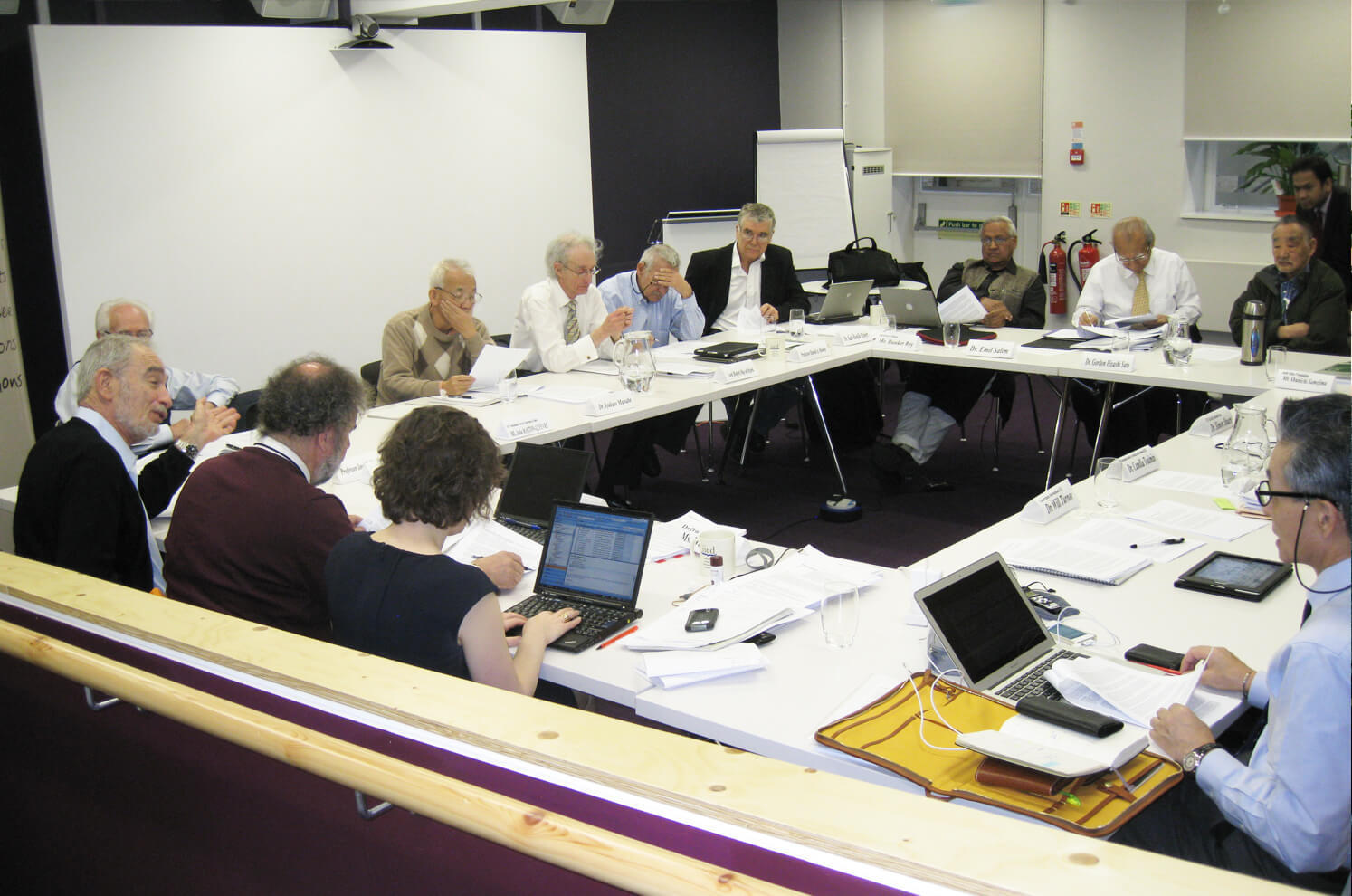
Prior to the presentation at UNEP from 8 to 10 February, 14 Blue Planet Prize laureates including the first winner Dr. Syukuro Manabe gathered in London to discuss the issues based on contributions each made and completed a joint paper.
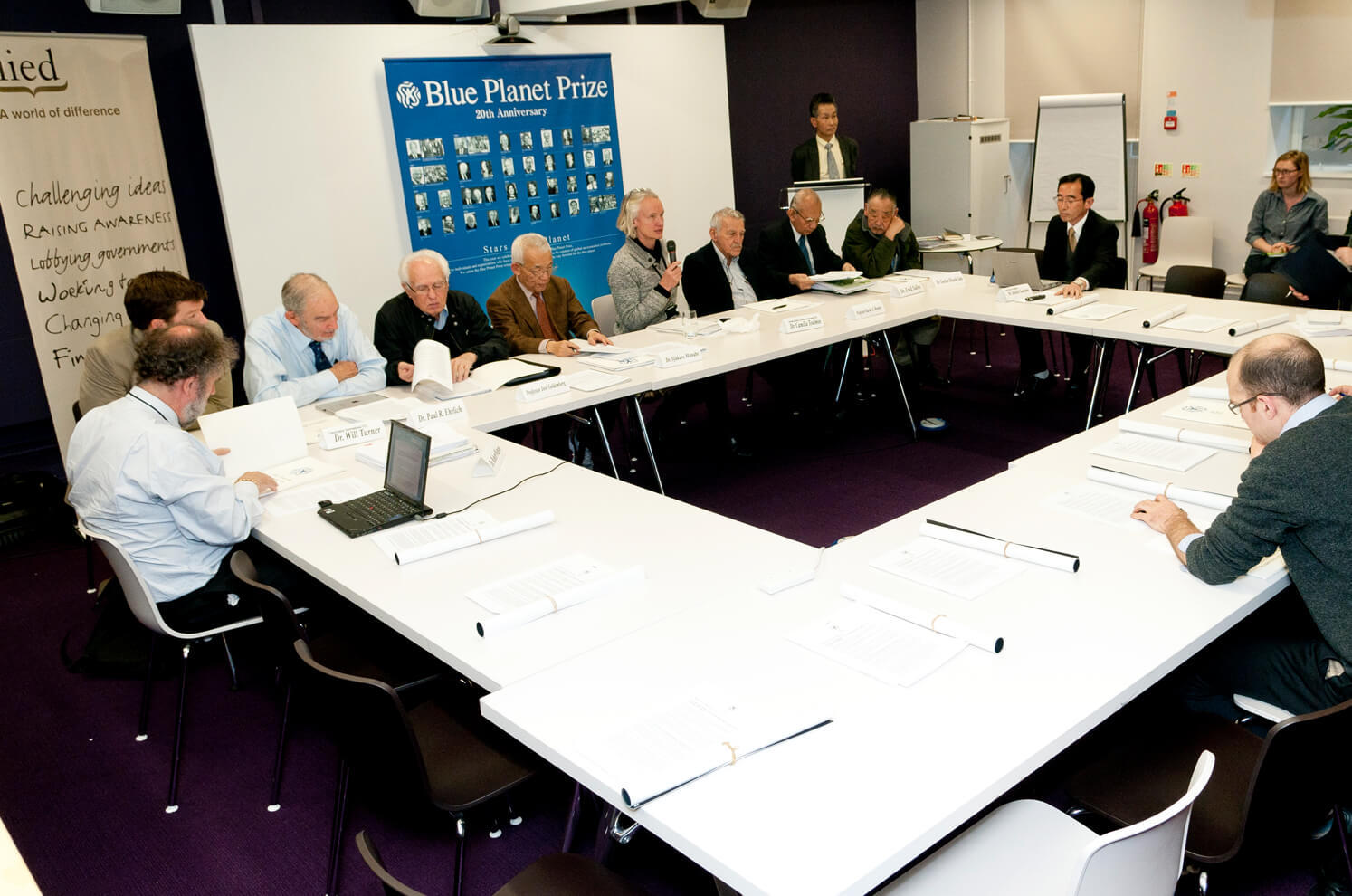
A press conference was held on the final day and Dr. Watson disclosed the ten key messages and appealed "If we are to solve the problem of climate change, loss of biodiversity and poverty, it is imperative for the world to act now."
Announcement of a joint paper at UNEP (February)
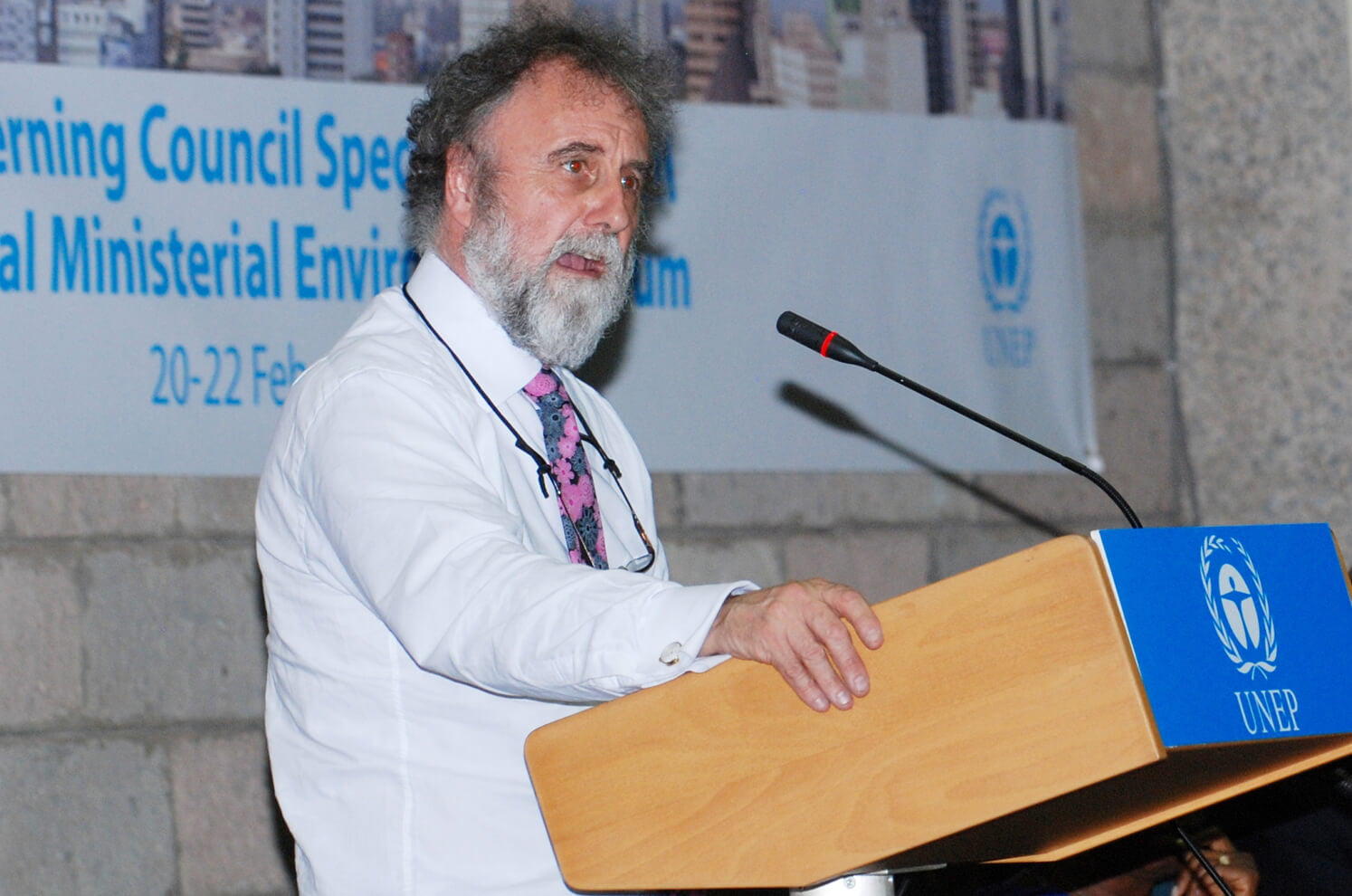
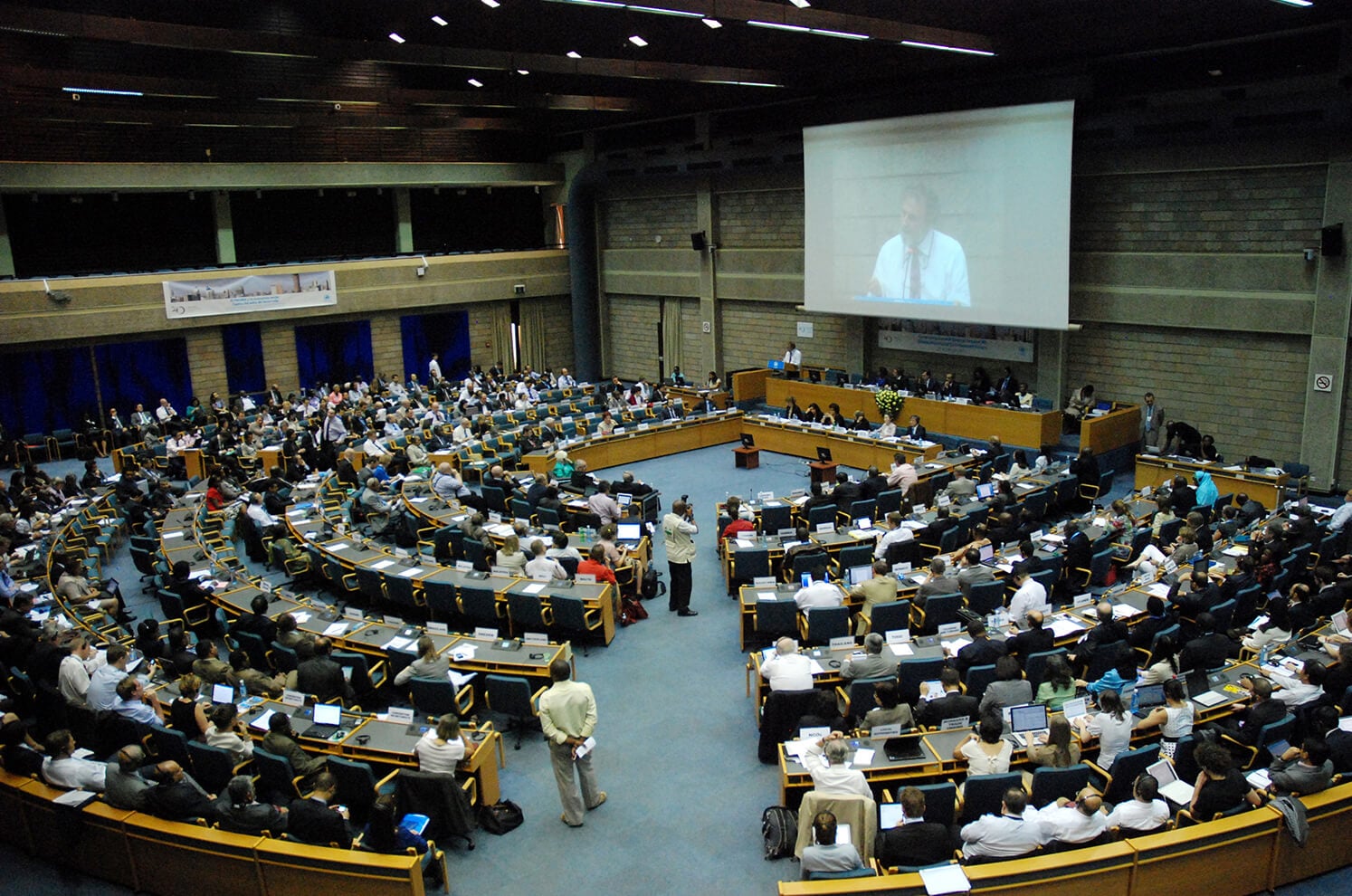
At the 12th UNEP Governing Council meeting held in Nairobi, Kenya on 20 February 2012, Blue Planet Prize laureates represented by Dr. Robert Watson presented a paper titled "Environment and Development Challenges : The Imperative to Act."
In the side event following the Governing Council meeting, Dr. Watson and two other laureates participated in a discussion meeting with others present.Lectures on the joint paper in London (March)
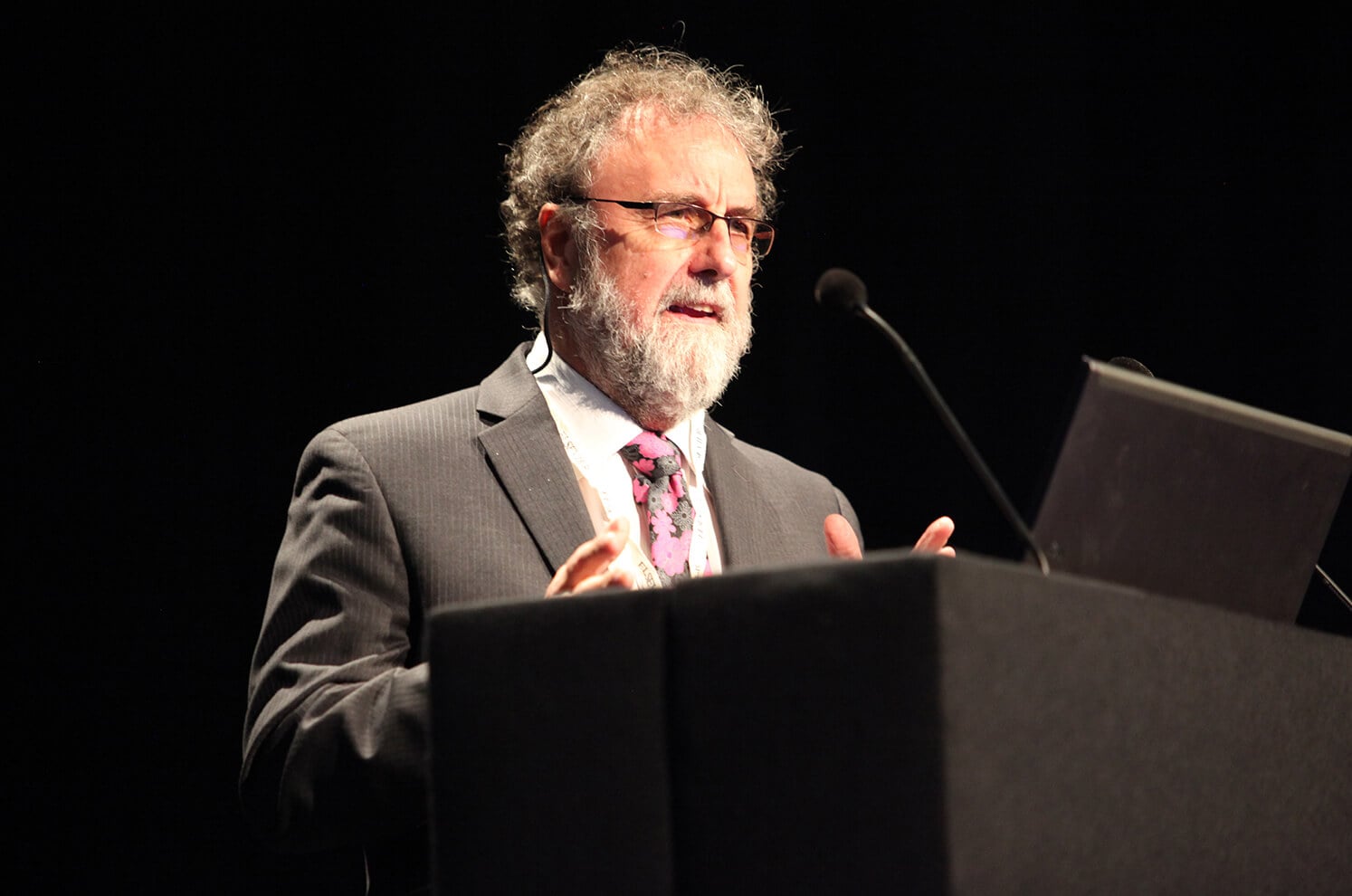
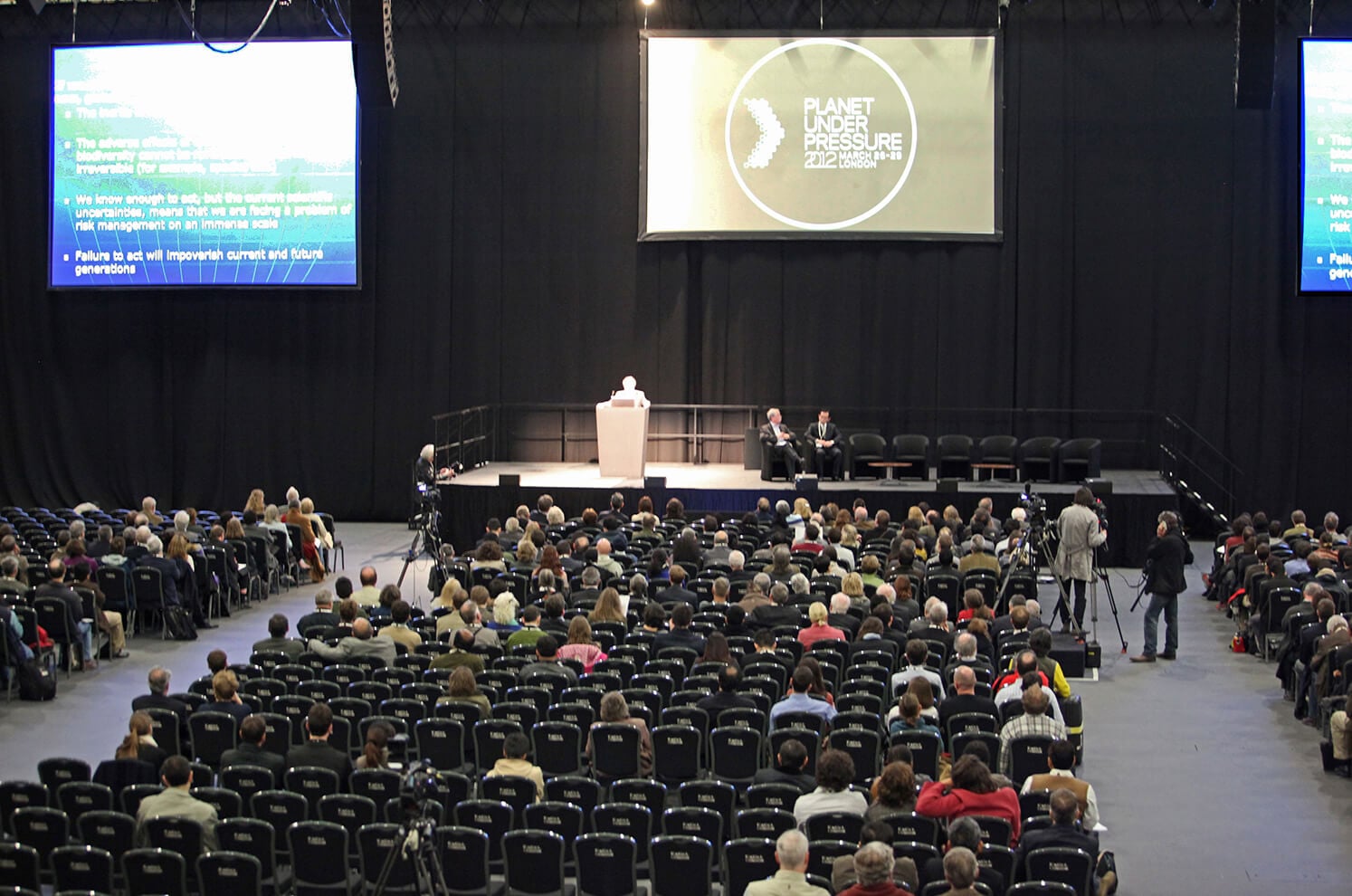
The joint paper summarizing the discussions by the Blue Planet Prize Laureates on current global environmental issues to commemorate the twentieth anniversary of the Prize published with the title Environment and Development Challenges: The Imperative to Act, was first presented at the 12th UNEP Governing Council meeting held in Nairobi, Kenya on February 20, 2012.
The paper was also presented at the international conference "Planet Under Pressure: New Knowledge Towards Solution," held in London from March 26 to 29. The event, which was sponsored by UNESCO and the International Council for Science, attracted more than 3,000 international scientists, including members of the American Association for the Advancement of Science and Nobel Prize laureates to discuss global environmental issues from a range of perspectives.
At the conference opening, Sir Watson, the 2010 Blue Planet Prize winner, energetically gave an introduction to the joint paper by the Blue Planet Prize laureates in front of a huge audience.
We had our own booth at the conference and displayed and distributed materials introducing the Asahi Glass Foundation, the Blue Planet Prize and other activities. Added to this, the Foundation acted as sponsor for the conference opening reception, and also sponsored the website and materials distributed at the venue, providing an unparalleled opportunity to gain publicity overseas, contributing extremely to furthering international recognition of the Asahi Glass Foundation and its activities.Press conference at the Rio +20,UN Conference on Sustainable Development, (June)
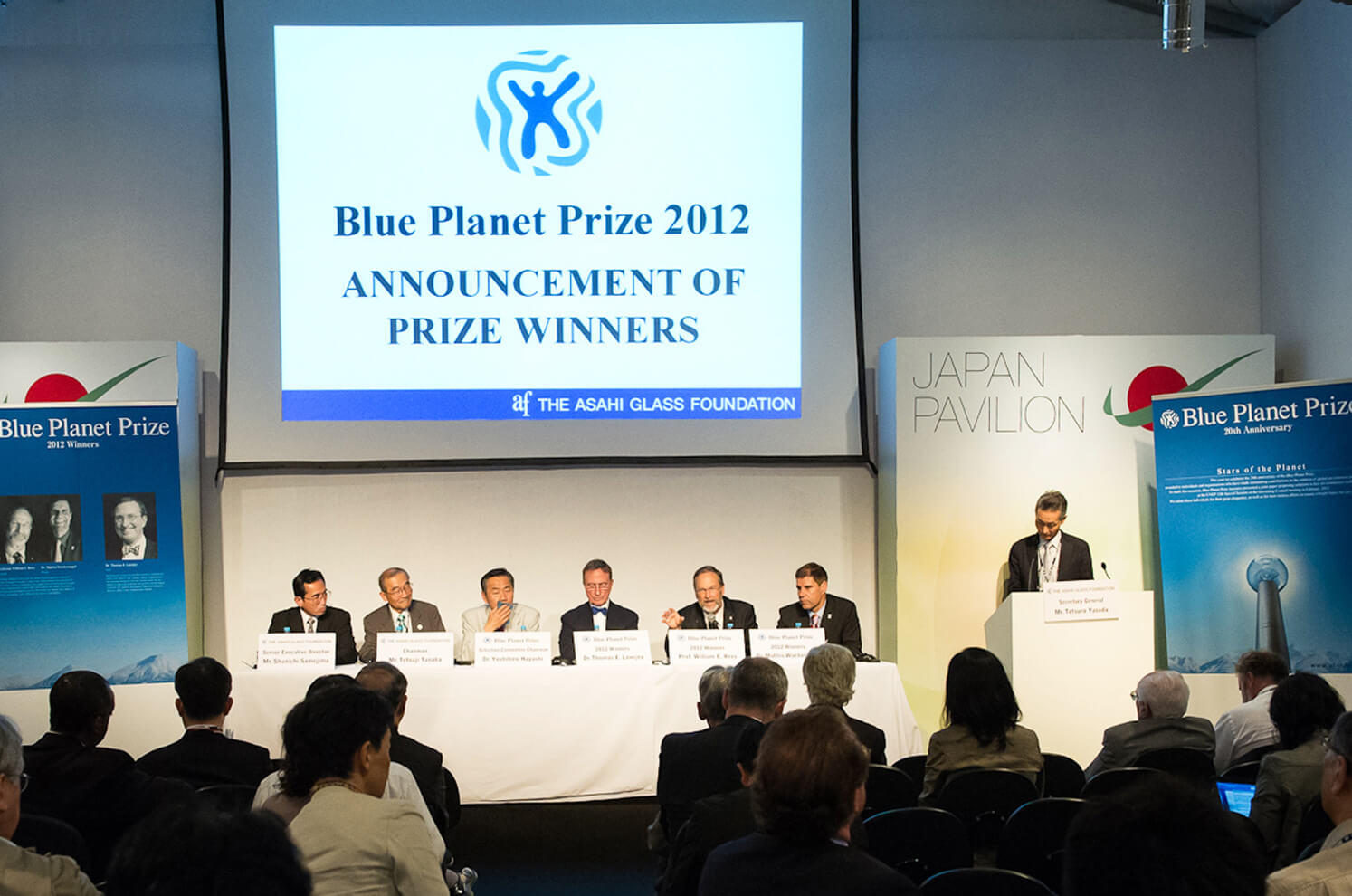
On June 17 (local date), the press conference announcing the laureates of the 21st Blue Planet Prize was held at the Japan Pavilion of Rio+20, United Nations Conference on Sustainable Development, in Rio de Janeiro, with Mr. Tetsuji Tanaka, Chairman, Dr. Yoshihiro Hayashi, the Selection Committee chairman and Mr. Shunichi Samejima, Senior Executive Director in attendance. Followed by a speech by Chairman Tanaka, Dr. Hayashi introduced the laureates of the year, who participated in Rio+20 and were present at the press conference venue. Professor Rees, Dr. Wackernagel, and Dr. Lovejoy introduced by Dr. Hayashi took the stage and gave their acceptance speeches. At the question-and-answer session held later, members of the media asked many questions and engaged in lively discussion with the winners.
Symposium
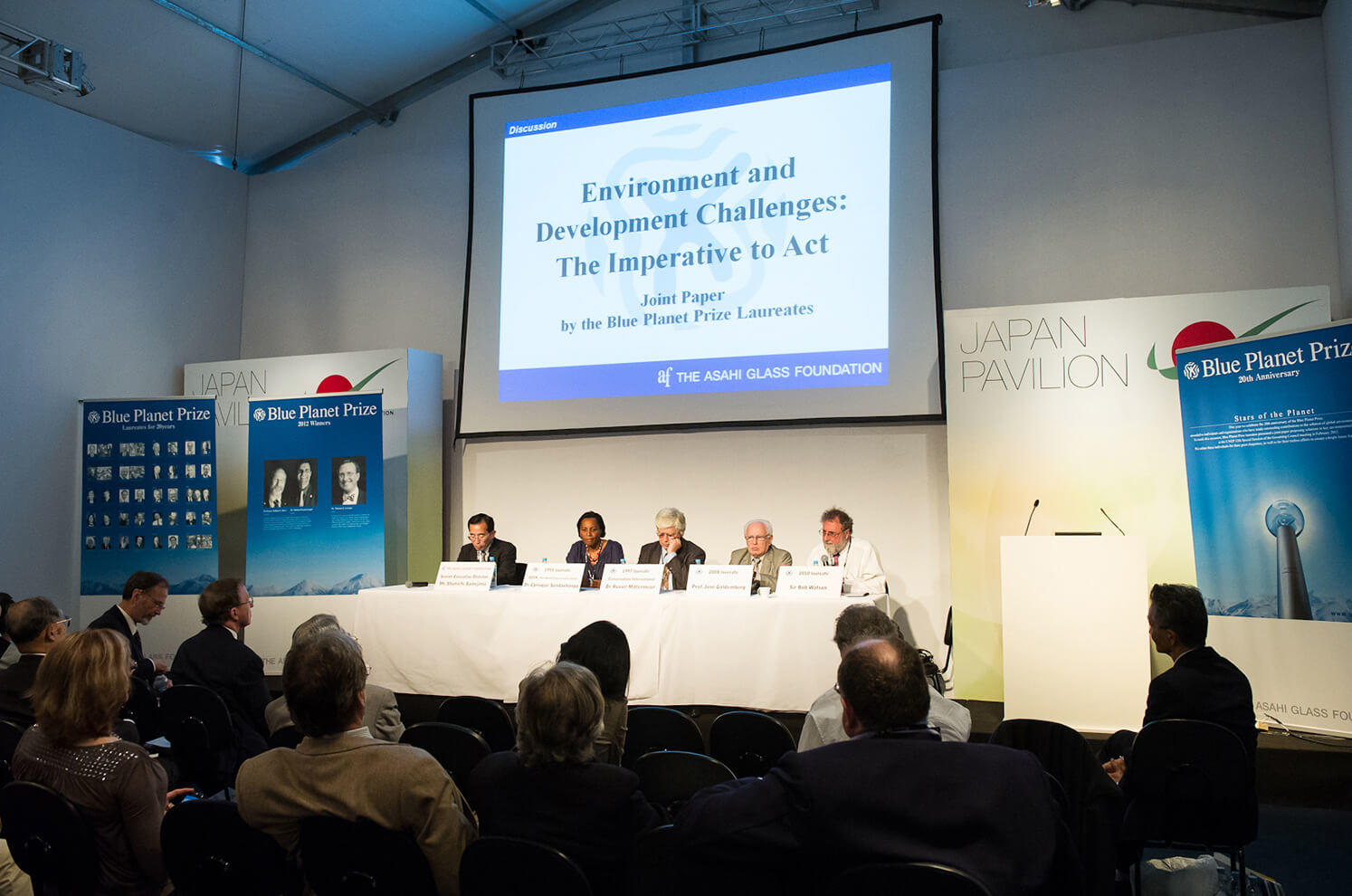
Following the press conference announcing this year's award winners at the Japan Pavilion, four Blue Planet Prize laureates engaged in a symposium as panelists for a discussion on the joint paper titled Environment and Development Challenges: The Imperative to Act, presented previously by Sir Bob Watson at the 12th UNEP Governing Council meeting held in Nairobi, Kenya on February 20, 2012. The participating laureates were Sir Watson (2010 laureate), Professor Goldemberg (2008 laureate), Dr. Mittermeier of Conservation International (CI)(1997 laureate), and Dr.Sendashonga of the International Union for Conservation of Nature (IUCN)(1993 laureate). Secretary General Yasuda introduced the laureates, prior to them each giving presentations.
There were a lot of enthusiastic questions from the audience at the Q&A session following the presentations. The panelists responded courteously from their perspectives as experts, and there was a lively exchange of views with the audience.Reception
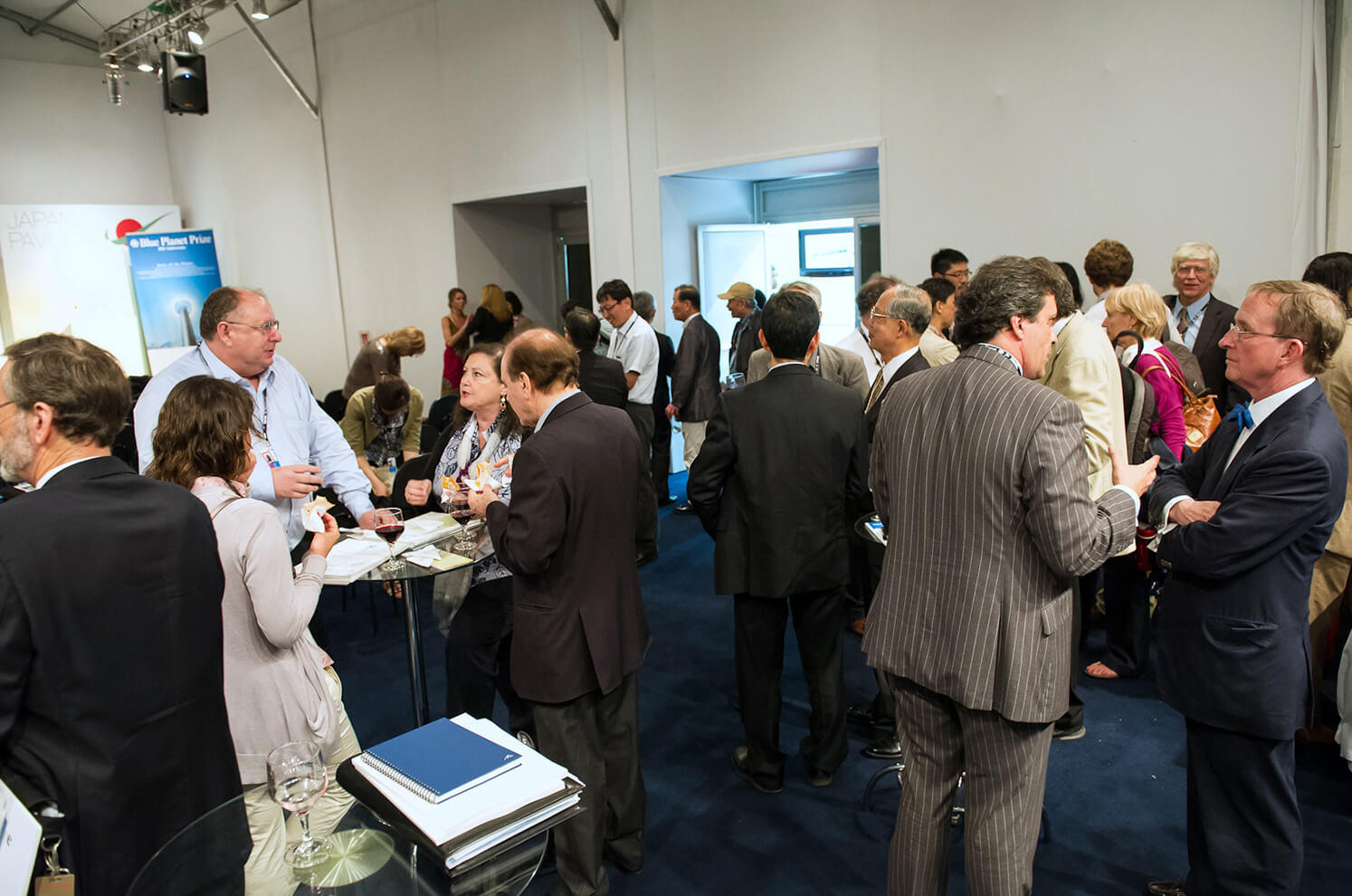
After the symposium by the Blue Planet Prize laureates, a reception party was held at the same venue. Panelists including Sir Watson, Professor Goldemberg and Dr. Mittermeier were present at the party as was Senior Executive Director Samejima who used his remarks to express gratitude.
One after another of the numerous participants exchanged words of congratulations with the 2012 Blue Planet Prize Laureates, Professor Rees, Dr. Wackernagel and Dr. Lovejoy.
All winners and participants were all smiles, creating a relaxed atmosphere at the reception party. -
10th (2002)
Commemorative Lectures (May)
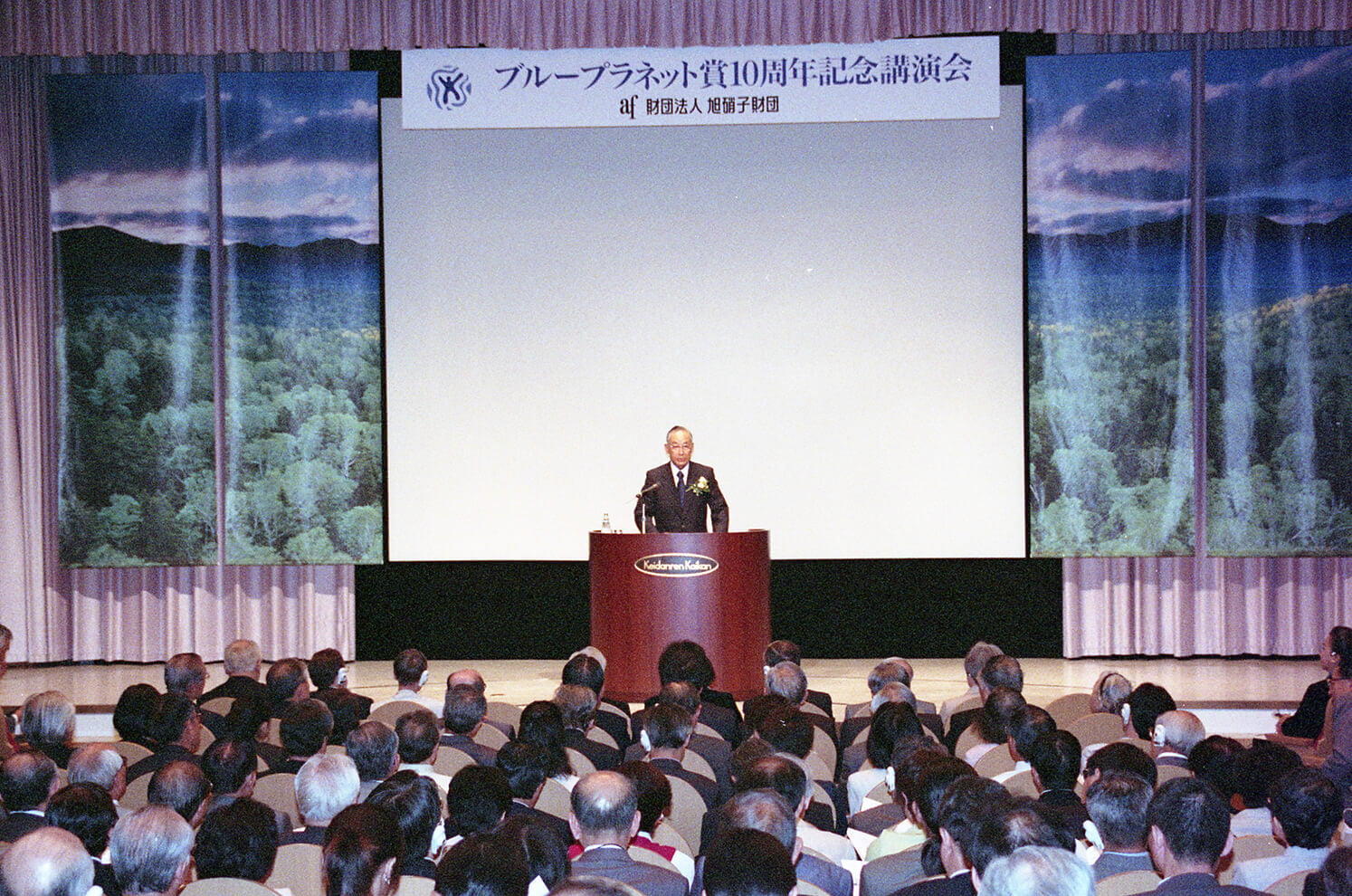
Date: May 14, 2002
Place: Keidanren Hall
Theme: " A Better Future for the Planet Earth ""We celebrated the fact that our international environmental award, the Blue Planet Prize, marked its first decade last year with the 10th Anniversary Commemorative Lectures. A crowd of more than 550 filled the hall to hear the guest speakers. The Ceremony opened with a speech by Hiromichi Seya, Foundation chairman, filled with his expectations about what can be accomplished if more people become involved in understanding environmental problems and working toward their resolution. It was followed by the keynote speech by Dr. Jiro Kondo, Foundation director and chairman of the Blue Planet Prize Selection Committee. In the afternoon session, the United Kingdom's Dr. Norman Myers, Dr. Syukuro Manabe and Dr. Theo Colborn of the United States discoursed. Each speaker gave a spirited talk on the latest research findings and information related to his or her specialization. The session continued under the adept guidance of Professor Hiroyuki Ishi of Tokyo University, who served as the general moderator for a lively question and answer exchange between the lecturers and the audience members filling the lecture hall. "
Keynote Lecture
Dr. Jiro Kondo, Chairman, Blue Planet Prize Selection Committee
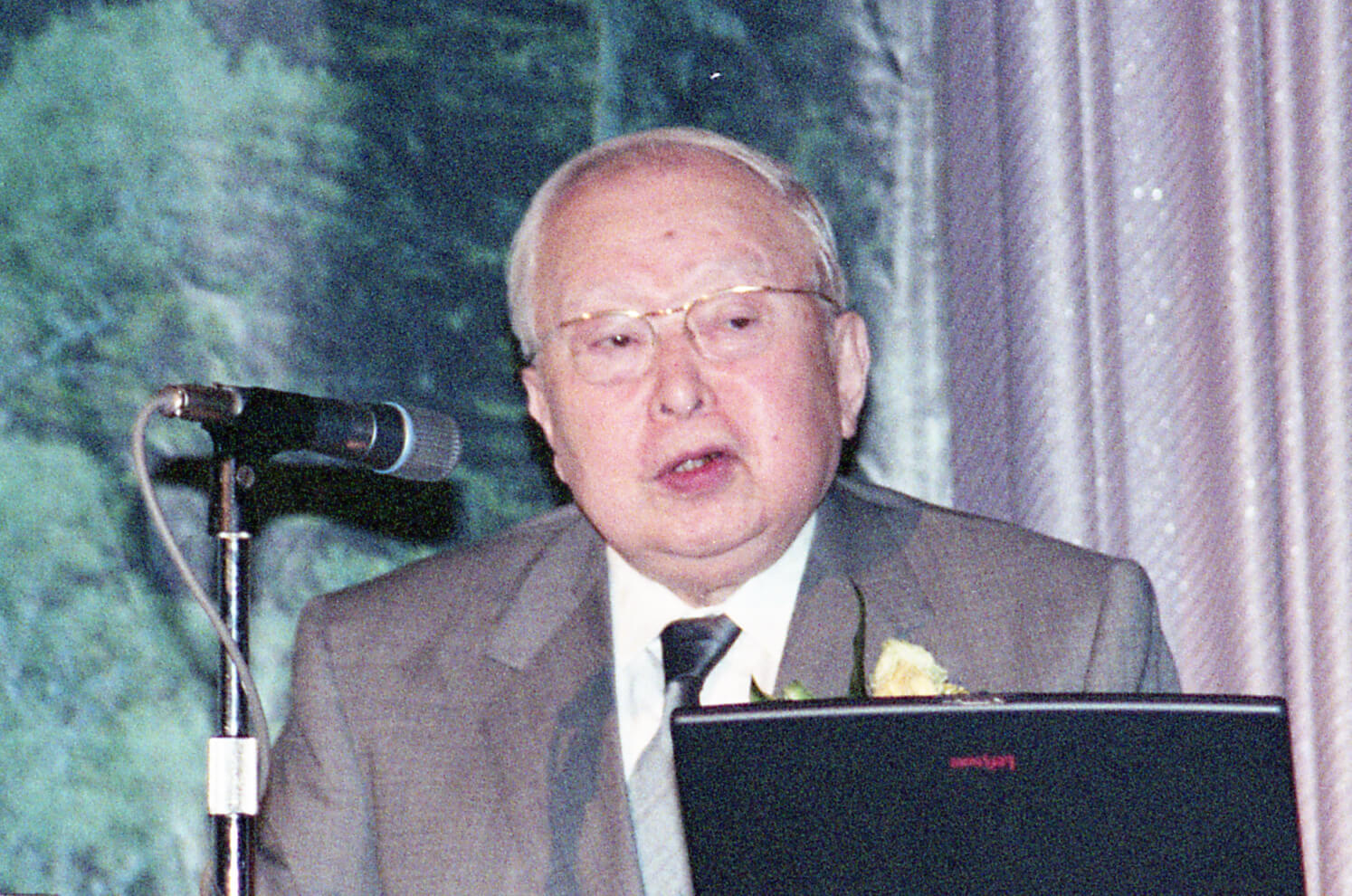
Ten-Year History of the Blue Planet Prize
One can say that environmental problems have come about as a result of human activities and that we are having an adverse effect on the Earth's environment.
Human beings emerged on the Earth approximately 5 million years ago, and since then we have developed by changing our environment. This is known as civilization, but increased populations and cultural and technological developments have brought forth numerous contradictions in today's world. If you take a human-centric look at environmental problems on a global scale, the effects have extended all around us in the air, the water, the soil and in the living creatures.
Representative problems include destruction of the ozone layer, climate change, loss of biodiversity, a lack of environmental philosophy and ethics, and environmental hormones. As I briefly introduced the accomplishments of the 20 recipients of the Blue Planet Prize over the past 10 years, I was impressed again at the broad scope of the environmental fields in which they have pursued their work with foresight and great passion. I predict that these fields in endeavor will only broaden in the coming years.Lectures
Dr. Norman Myers (10th Blue Planet Prize)
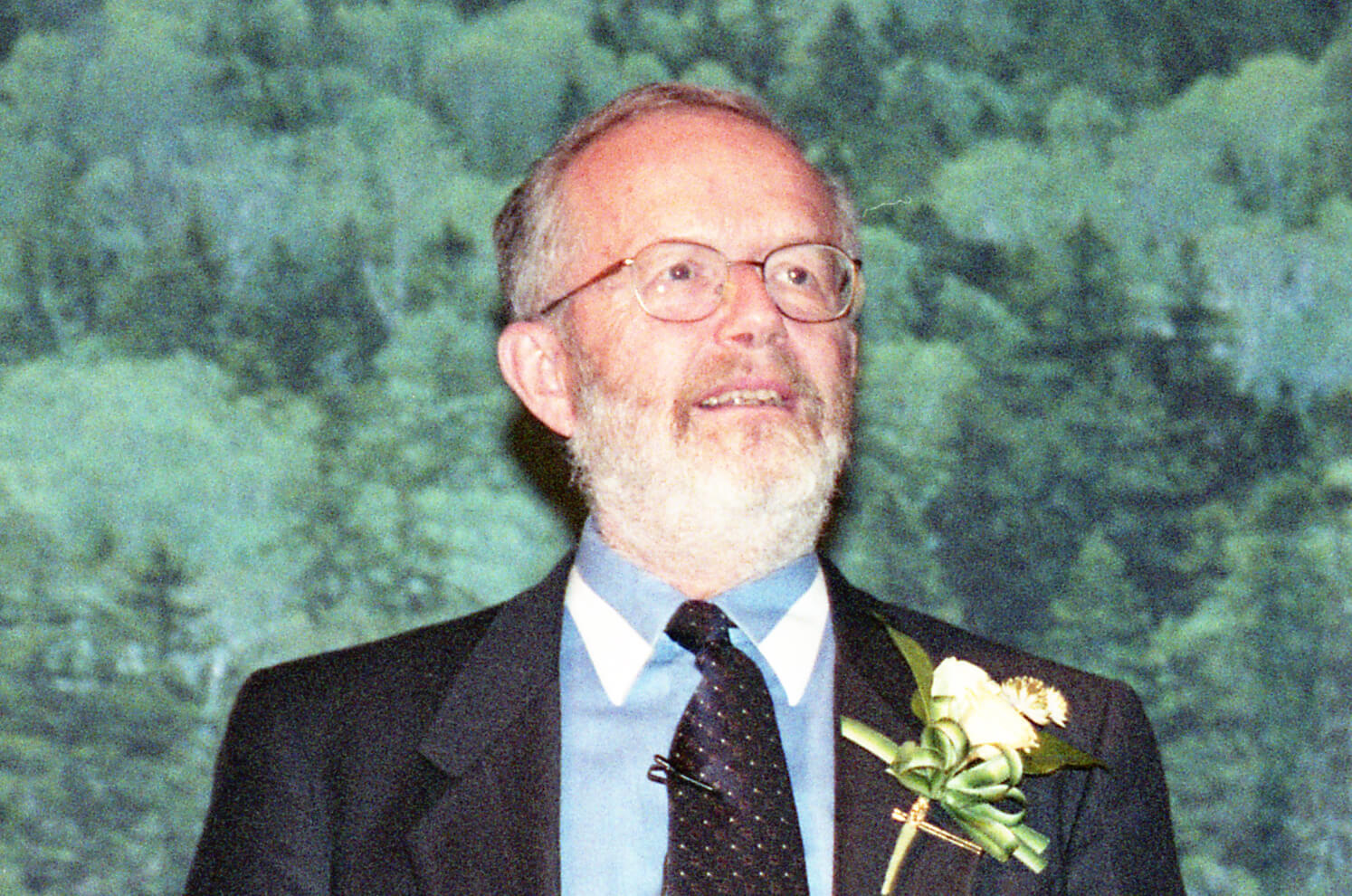
Recent Research Breakthroughs in Environmental Conservation for Sustainable Development
This lecture reviews three of my recent research topics. One is "biodiversity hotspots." Endemic species are not distributed widely and equally all over theEarth, but inhabit small, limited regions in high concentrat ons. Forty percent of plant species and 30% of vertebrate species (except fish) are confined to just 25 localities that make up just 1.4% of Earth's land surface. It is extremely cost-effective to pursue environmenta conservation in these 25 "hotspots" to preserve biodiversity.
My second research topic is "perverse subsidies." We have come to understand that the subsidies for agriculture, fossil fuels, road transportation, water, forests and fisheries provided by governments in each country worldwide have adverse impacts on both environments and economies. Many countries have begun to face the challenges of reducing these subsidies since taxpayers in each country are paying mutually contradictory costs associated with the subsidies and environmental repair, a double burden.
The third topic is "new consumers." Seventeen developing and three transition countries now feature over 1 billion people with enough household income to engage in consumerist lifestyles that includes enjoying meat every day and buying cars in fast-growing number, which leads to water and grain shortages, air pollution and other severe impacts on the environment. What we should do about this is becoming an important topic.Dr. Syukuro Manabe (1st Blue Planet Prize)
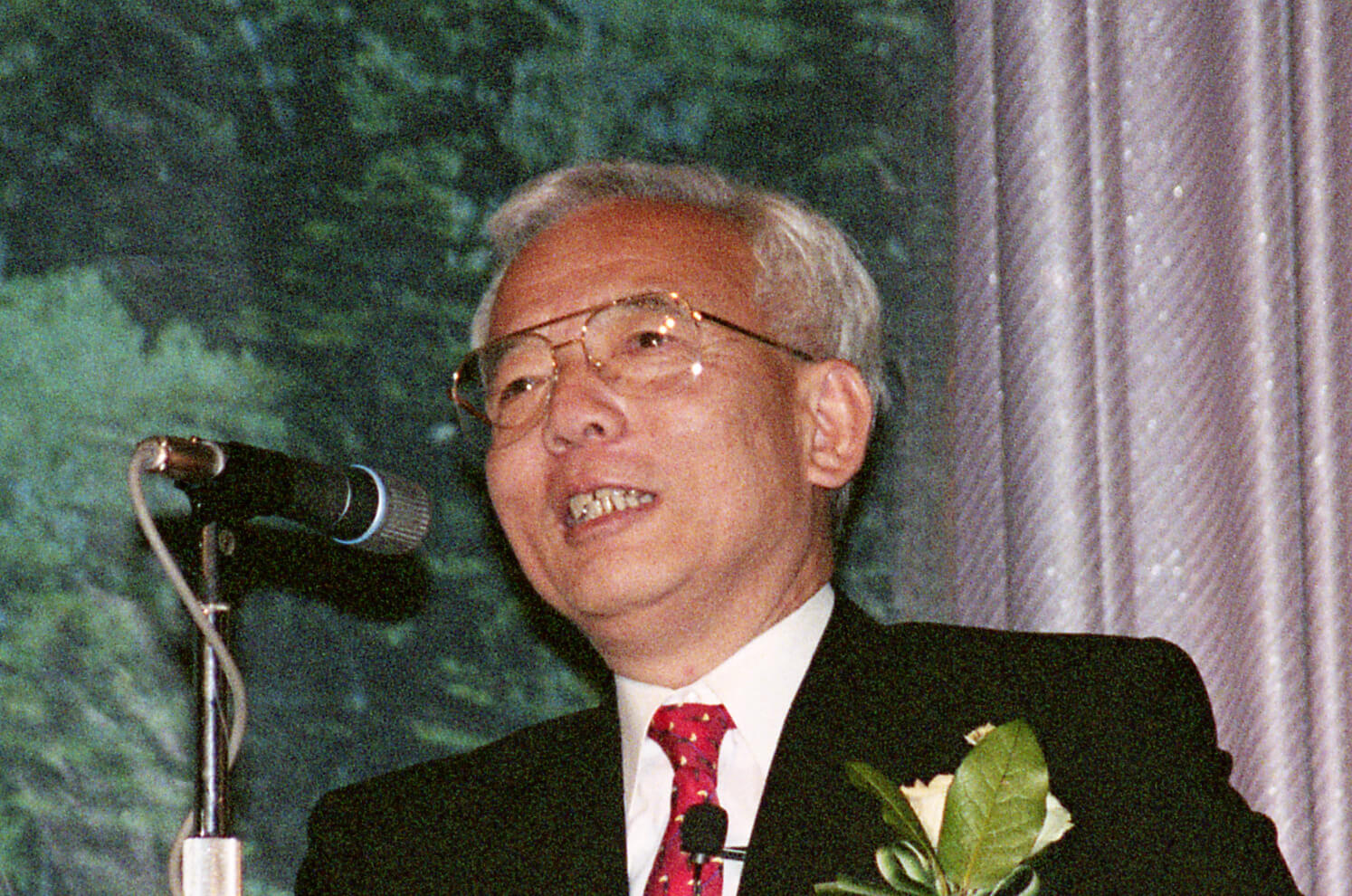
Global Warming and Water Resources
Is global warming happening"c-txt-cmn u-fw-bold">Dr. Theo Colborn (9th Blue Planet Prize)Dr. Theo Colborn (9th Blue Planet Prize)
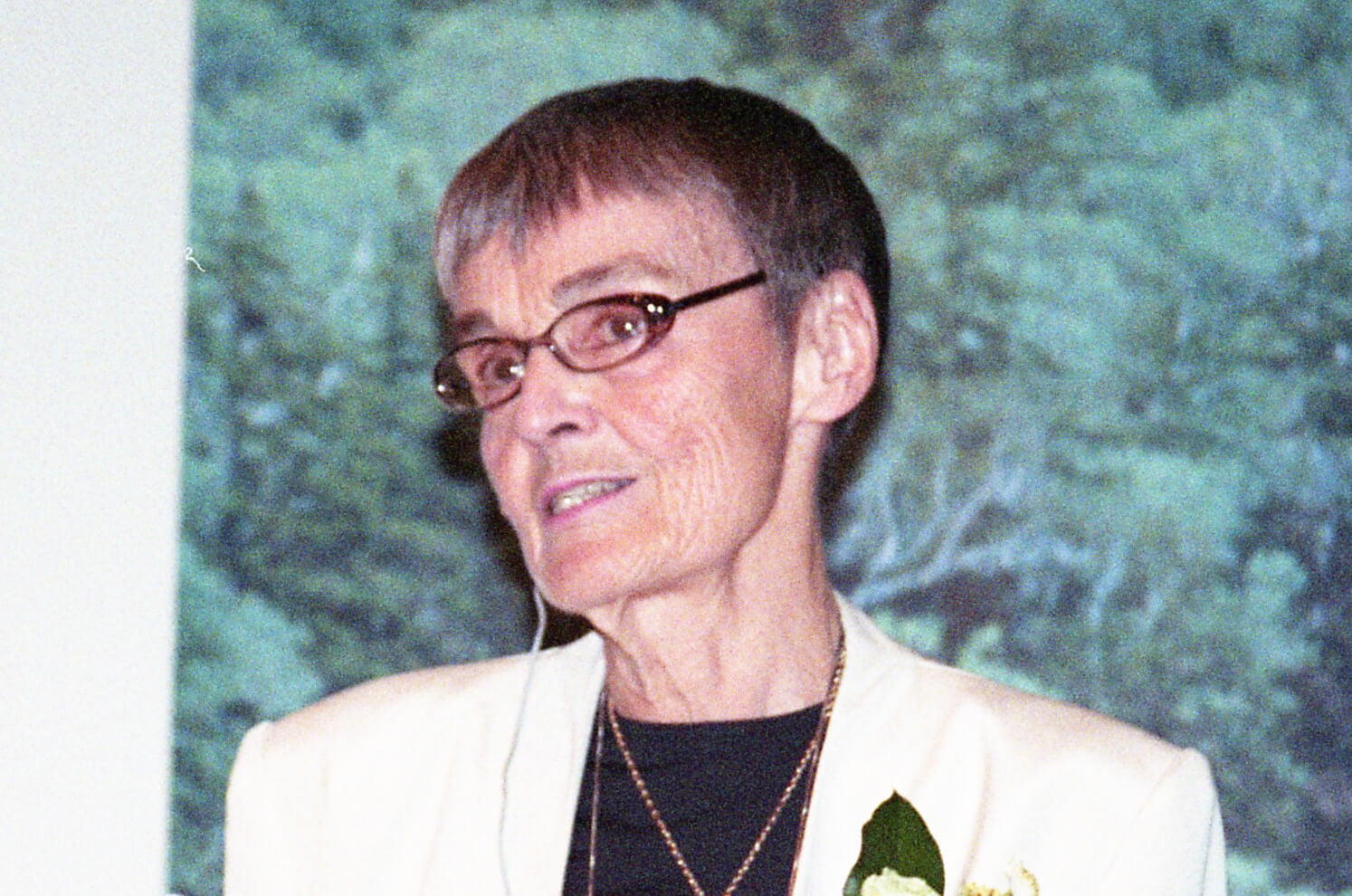
Human Integrity and Reproductivity: At Risk?
Today I will talk about whether we should be neglecting the fact that chemical substances are intruding into our daily lives. Synthetic chemicals are being detected in everyone and their impact extends to all generations. When exposed to endocrine disruptors, the so-called environmental hormones, particularly in the womb, there is a large impact on the fetus. With prenatal exposure, endocrine disruptors have been shown to impair functioning of physiologic, immunologic, neurologic and reproductive development and function. In the post-natal period, it can impair intellect, behavior and immune competency. In adults, it has been shown to predispose autoimmune problems, gonadal cancers and fertility. Males appear to be at greater risk from endocrine disrupting chemicals than females. In Japan, for example, the rate of male fetal deaths has risen over the rate for females since the 1970s. Humans are continuing to change the chemical composition of the biosphere and most of us do not comprehend the dire implications of this activity. Consequently, we are doing almost nothing about it. International research into the concentrations and impacts of endocrine disruptors is underway, and it is of utmost urgency that we publicize these results. Before it is too late, let's protect the security of the womb to preserve the inherent functioning and form of humanity.Prof Hiroyuki Ishi
General Moderator